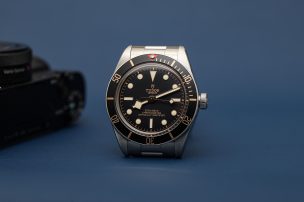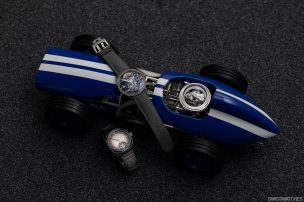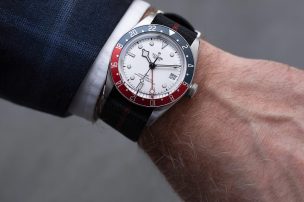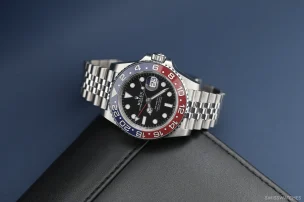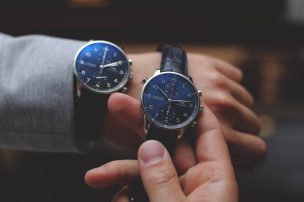
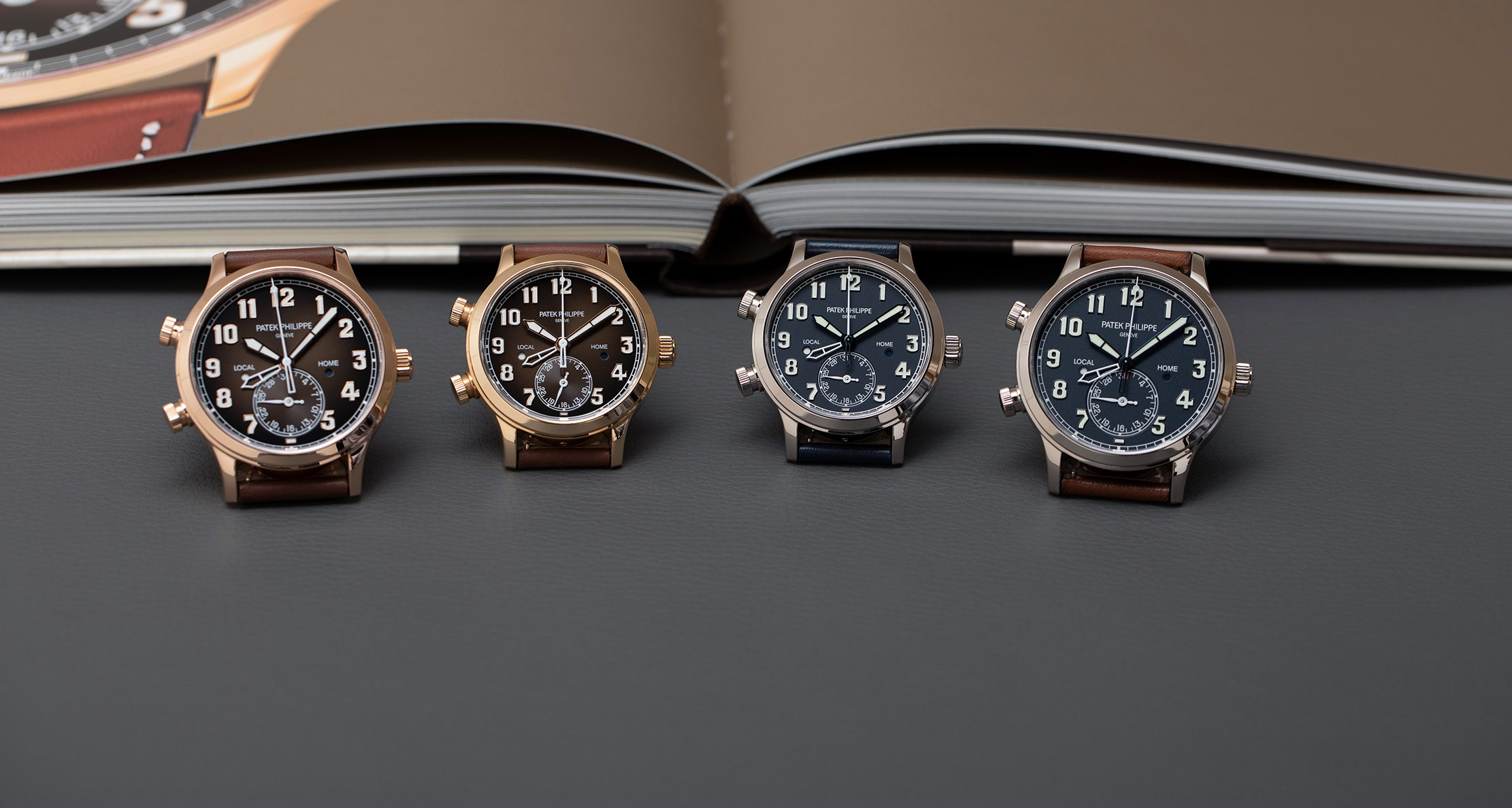
Patek Philippe Calatrava Pilot Travel Time – Ref. 5524 & 7234
When Patek Philippe created a pilot’s watch with the Reference 5524G back in 2015, the watch world was in for a surprise. For such a classic manufacture, such a striking watch seemed somewhat unusual. But the surprising new piece did not appear by chance. Patek Philippe had already developed hour-angle watches for the military back in the 1930s. The hour-angle watches, also known as ‘siderometer watches’, enabled pilots to determine their specific location even over the open sea, at a time when GPS devices were not yet available.
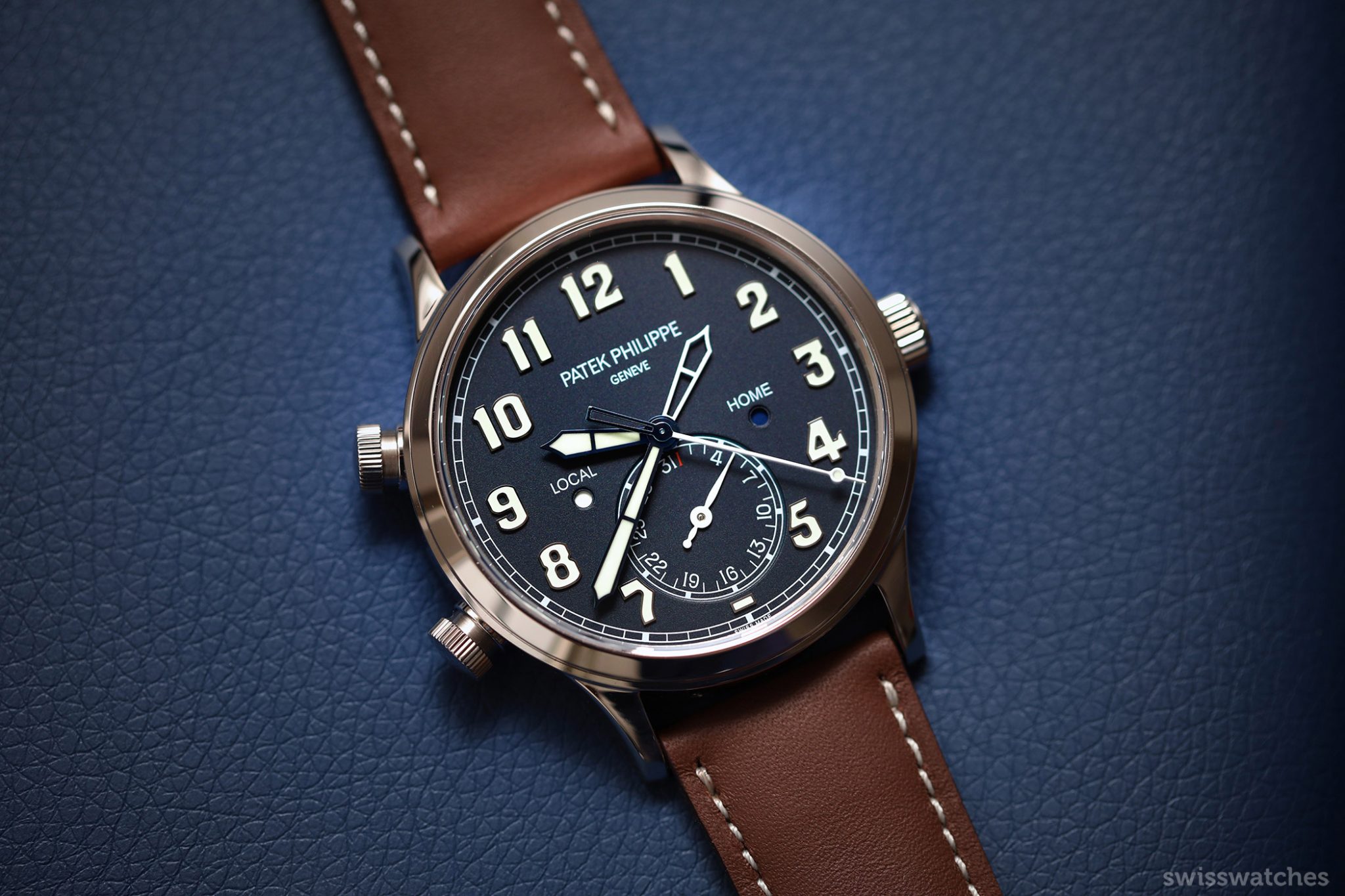
Of course, digital on-board computers were to soon make the analogue display redundant – but the legend of the pilot’s watch remained. As the years passed, pilots and frequent flyers began mainly using world time zones for orientation. In 1959, Patek Philippe presented the first patent of its own for its Travel Time mechanism, and in 1996, the manufacture revolutionised it again with a new time zone mechanism. This allowed the second time zone to be adjusted without affecting the precision of the real time when the local time hour hand was decoupled. It was also visually distinguishable thanks to the two superimposed hour hands (displaying home and local time) from the centre.
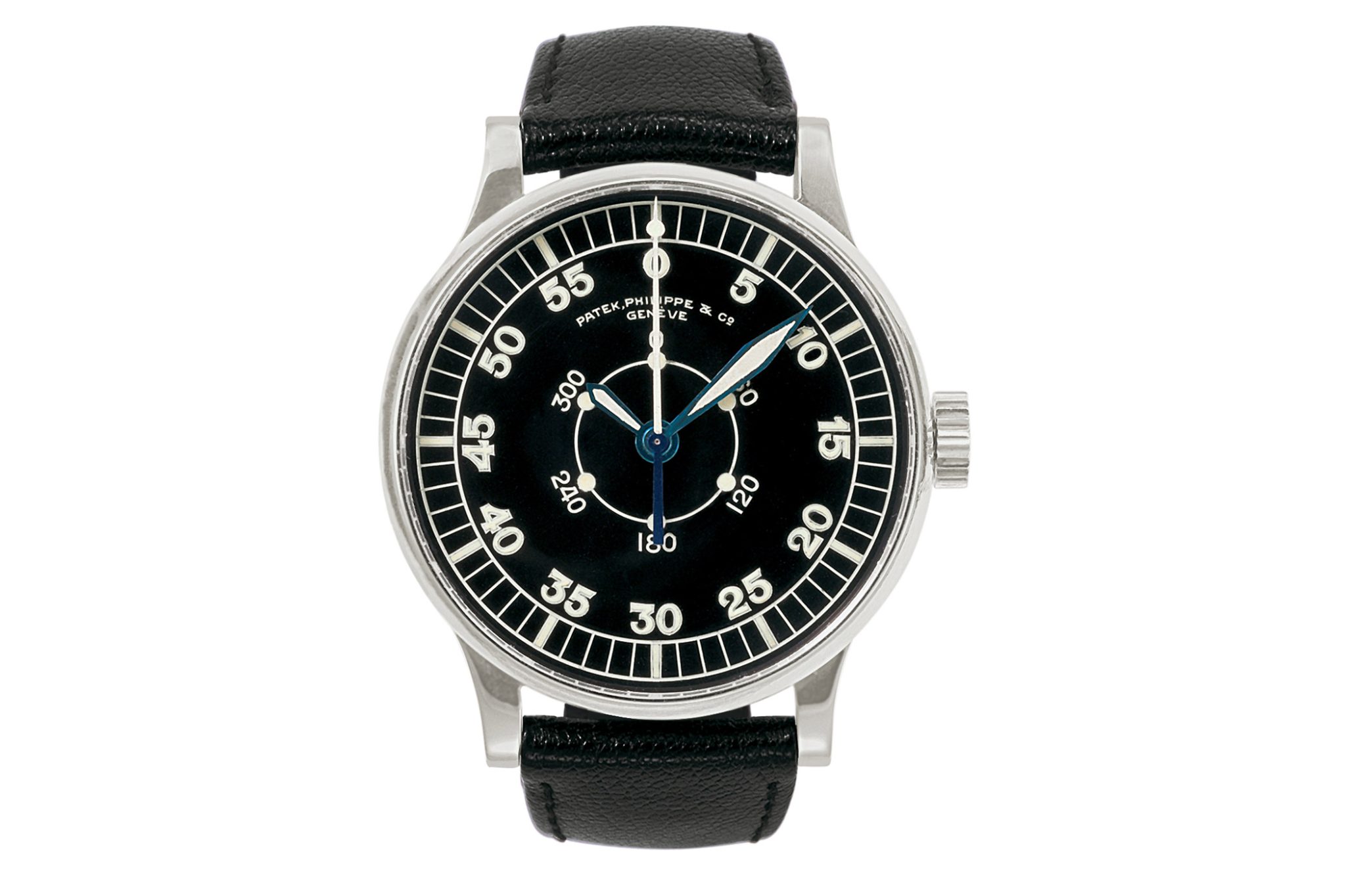
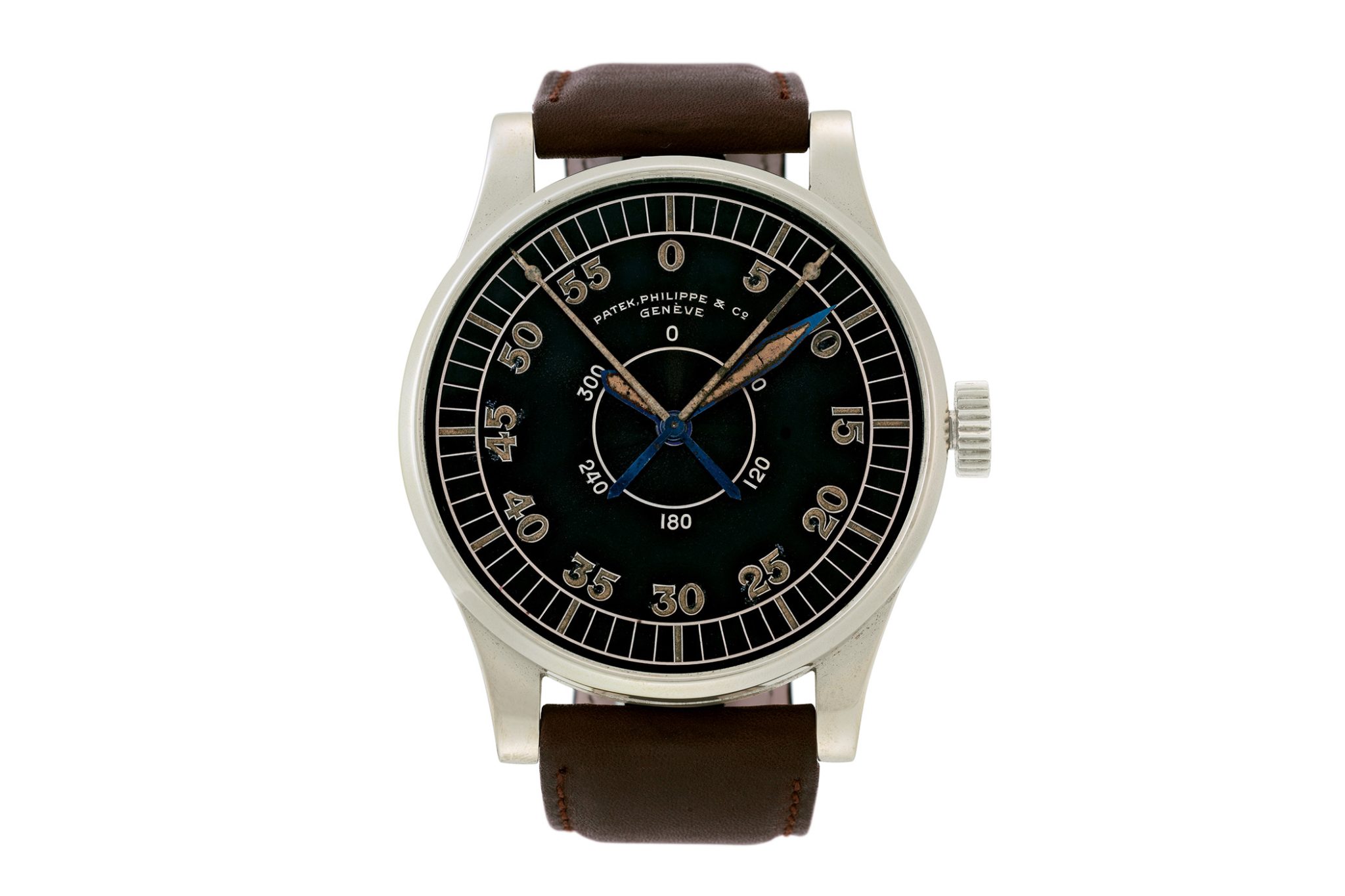
For the pilot’s watch comeback in the form of the Patek Philippe Ref. 5525G in 2015, Patek was inspired by two of their 1936 hour-angle watches. As the siderometer had become old-fashioned, it gave way to a function that is much more useful today; the display of a second time zone. Since 2015, the Patek Philippe Calatrava Pilot Travel Time pilot’s watch has been steadily developing.
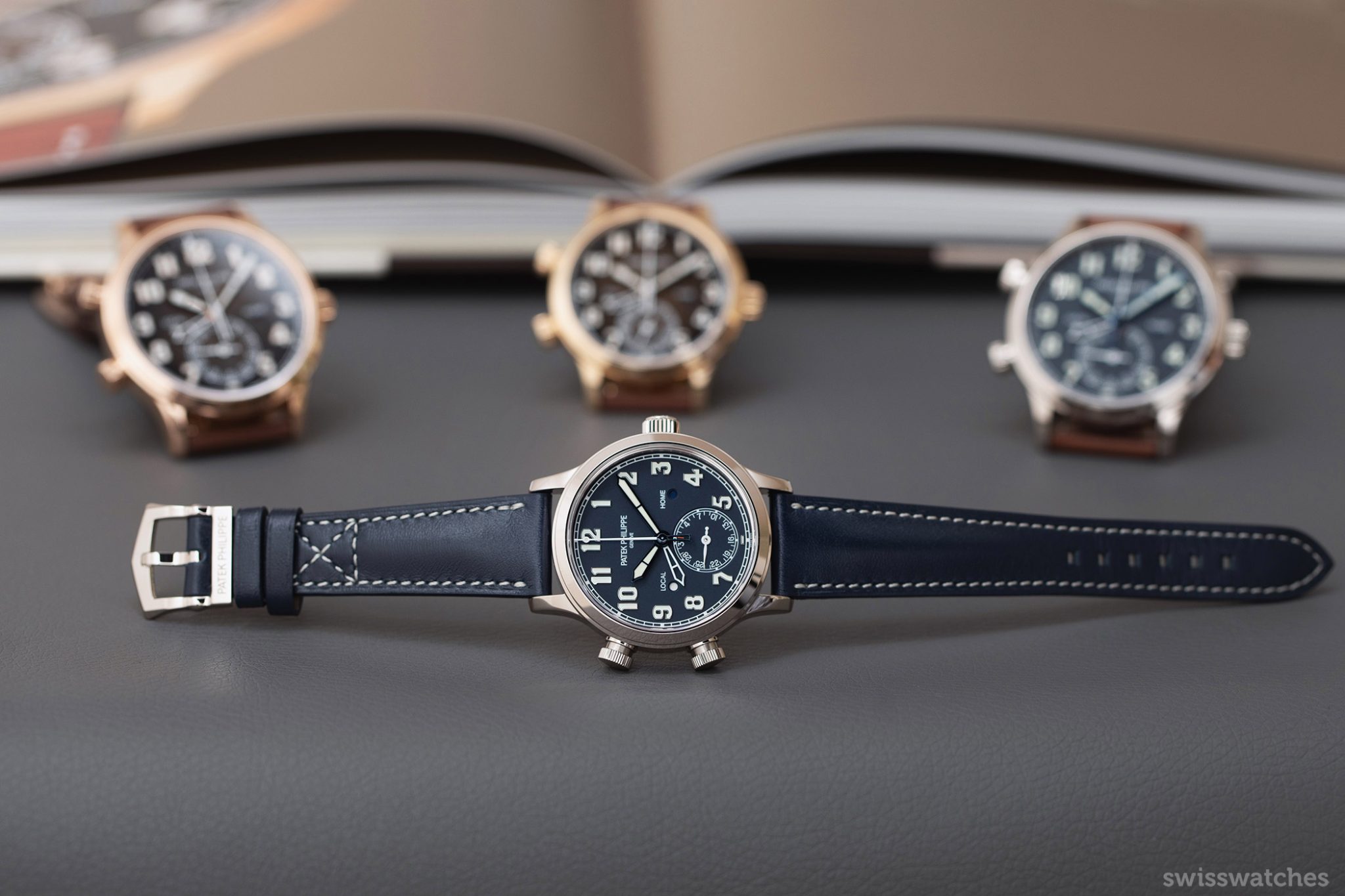
In 2018, a version in pink gold (Ref. 5524R) was released and, a little later that year, a mid-size version measuring 37.5 mm (Ref. 7234R) followed. Now, Patek is also adding another 37.5 mm version (Ref. 7234G) to accompany its 2015 white-gold model. While these popular timepieces are always on the move in world history, we have all gathered four references together, and are ready to put them under the lens.
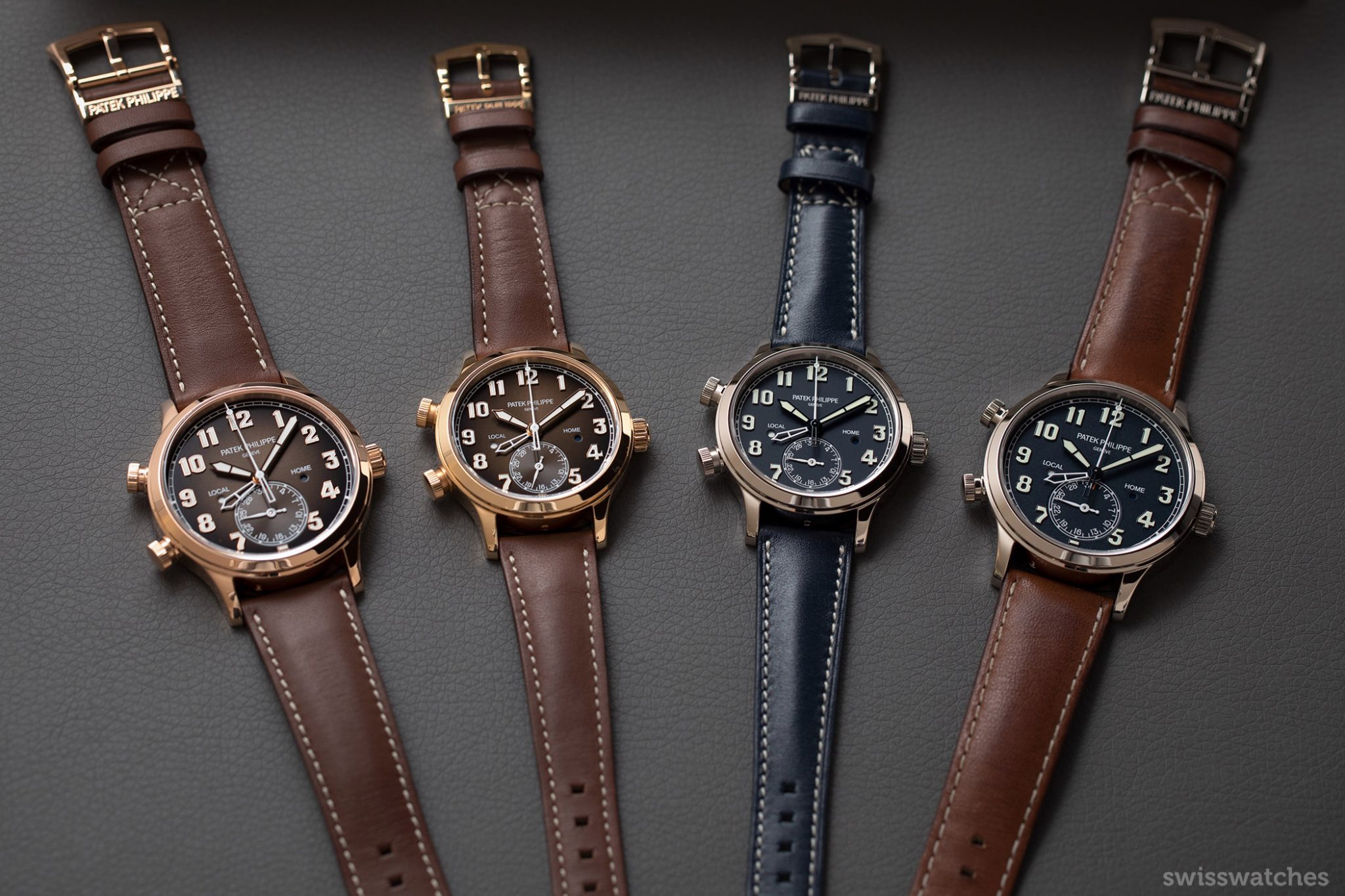
The Collection and its Design
Calatrava Pilot Travel Time Reference 5524G (2015)
When Patek first revisited the theme of pilot’s watches back in 2015, it did not want to match perfectly with the familiar image of the traditional manufacture; rather, it created a modified, angular Calatrava case with rustic pushers, oversized numerals and striking, luminous baton hands.
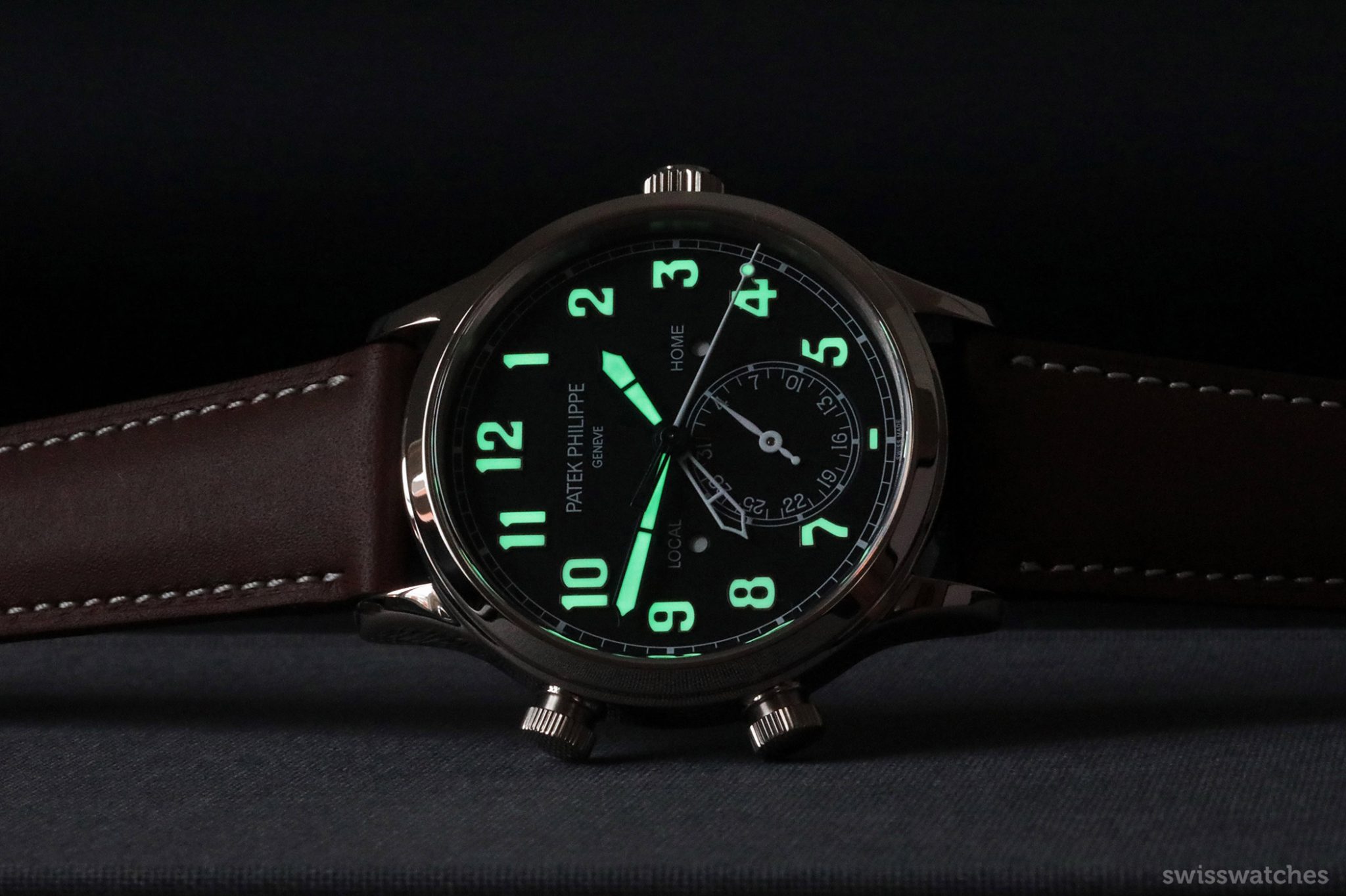
But when you look back to 1936 and look at the Movement No. 170 383 or No. 170 381 models (as seen above), you can see the origins of Patek’s modern pilot’s watch. Instead of housing the pilot’s watch in an oversized stainless-steel case, this watch combines a white-gold case with a moderate 42 mm diameter (or even only 37.5 mm), that is rather typical for Patek. Even a bracelet with metal rivets, common for pilot watches, would probably never be found at Patek.
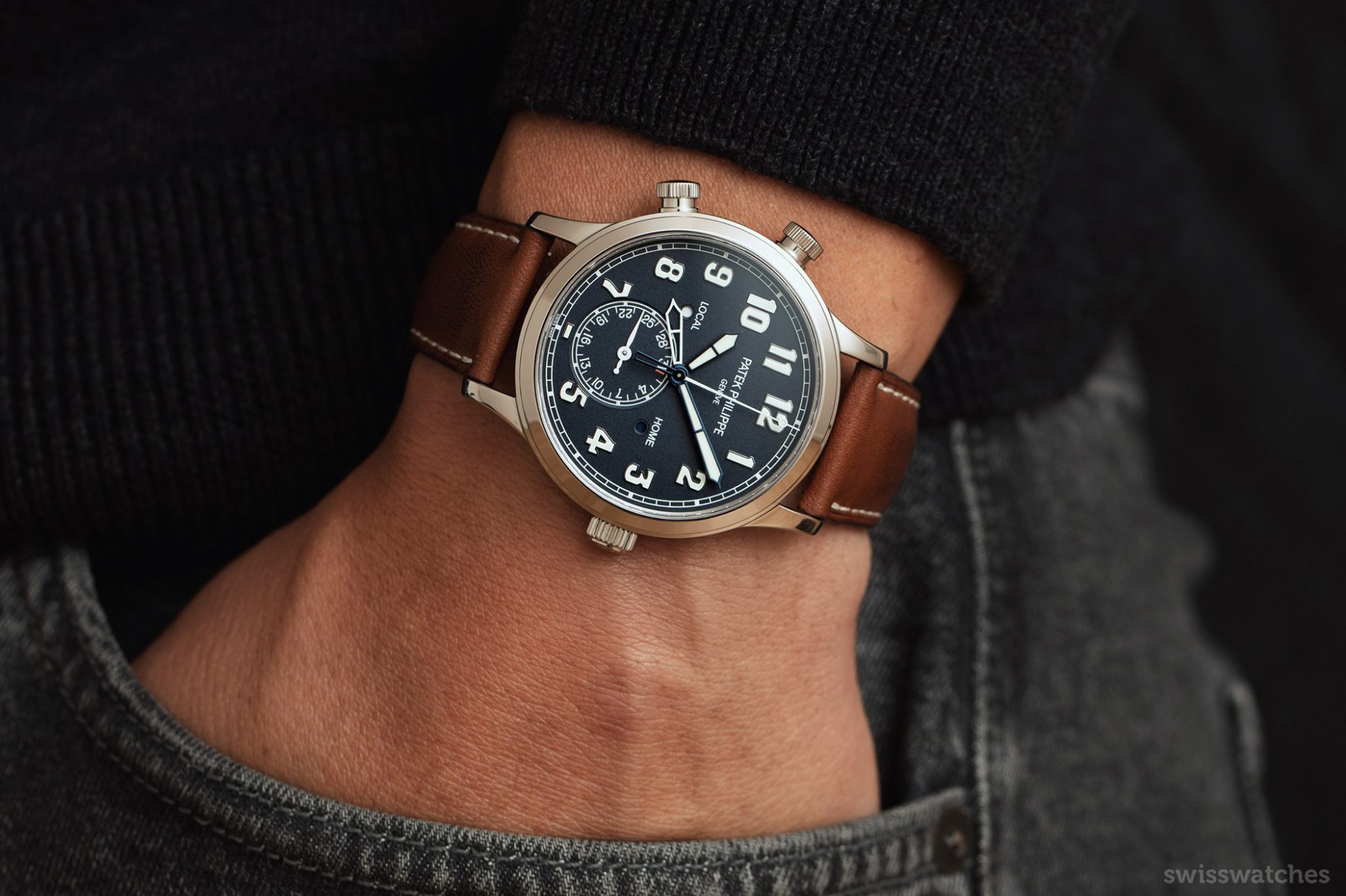
The Calibre 324 S C FUS is equipped with the aforementioned dual time-zone mechanism that was patented in 1996. It is modified with a Gyromax balance and Spiromax hairspring made of silicon derivative Silinvar – a light but hard and almost friction-free, anti-magnetic, and corrosion-resistant material.
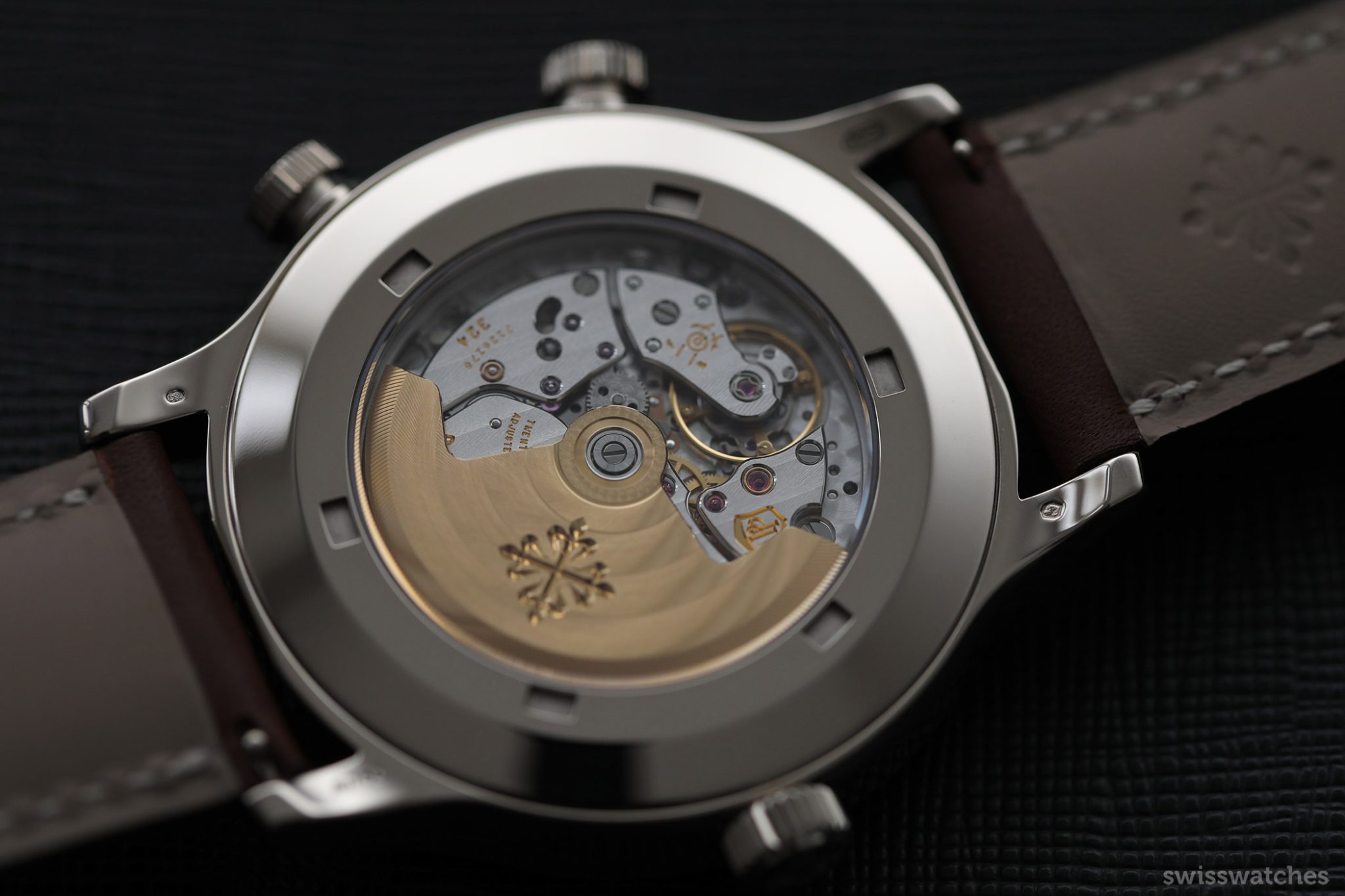
In Patek’s pilot’s watches, the time zones are divided into local time and home time. The skeletonised local time hand is concealed under the home hand when it is not in use. The baton-shaped hands made of blued steel are generously covered with luminous material in the style of a classic pilot’s watch. However, unlike usual pilot watches, the dial is blue instead of black, inspired by the paint scheme of the American fighter planes of the 1930s. Price: 46,421 euros.
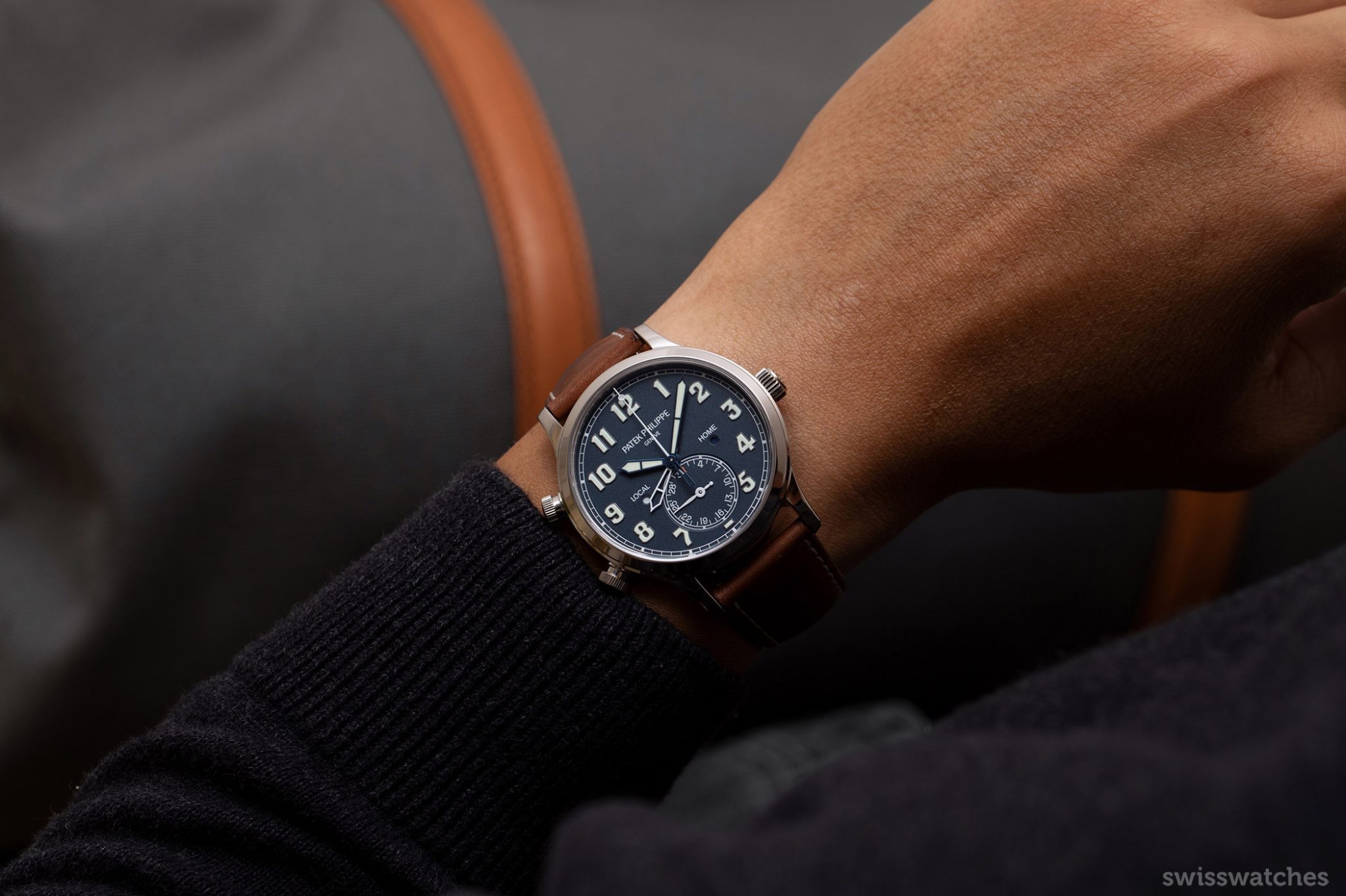
Calatrava Pilot Travel Time Ref. 5524R (2018)
In 2018, once the initial astonishment had subsided, the manufacture followed up with the launch of the Patek Philippe Reference 5524R, a Calatrava Pilot Travel Time in pink gold, featuring a brown dial and subtle black gradient from the centre of the dial to the edges. Its broad baton hands matched the rose-gold case.
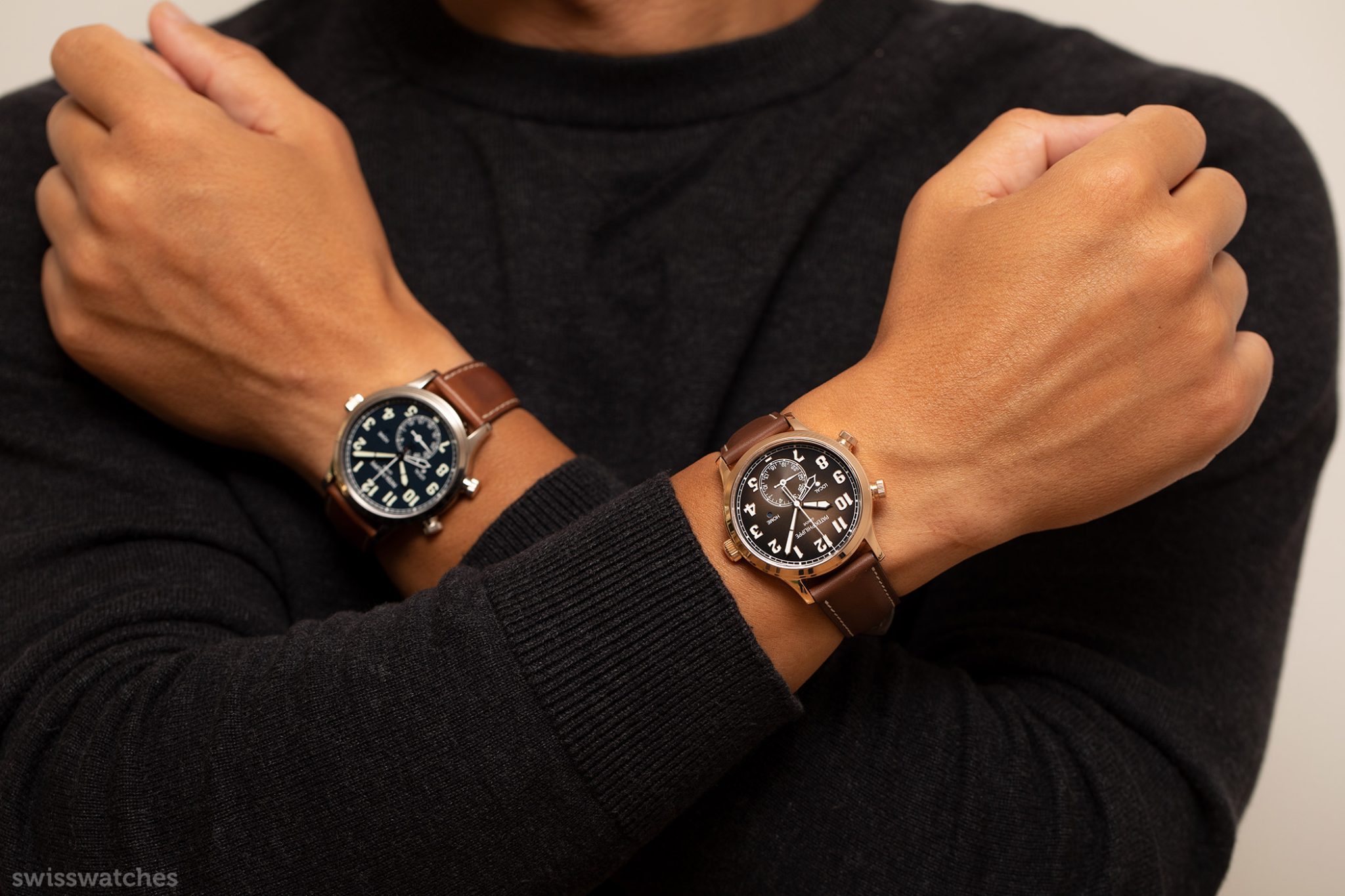
The watch is presented on a vintage brown calfskin strap, which is almost a little reddish in colour, yet harmonises beautifully with the rich, 5N rose-gold tone of the case, as well as the sunburst brown-black dial. Of course, it’s a little too elegant for a pilot’s watch and all the features one associates with them. Finally, the 5524R uses the same automatic calibre 324 S C FUS with a second timezone and date hand. Price: 46,421 euros.
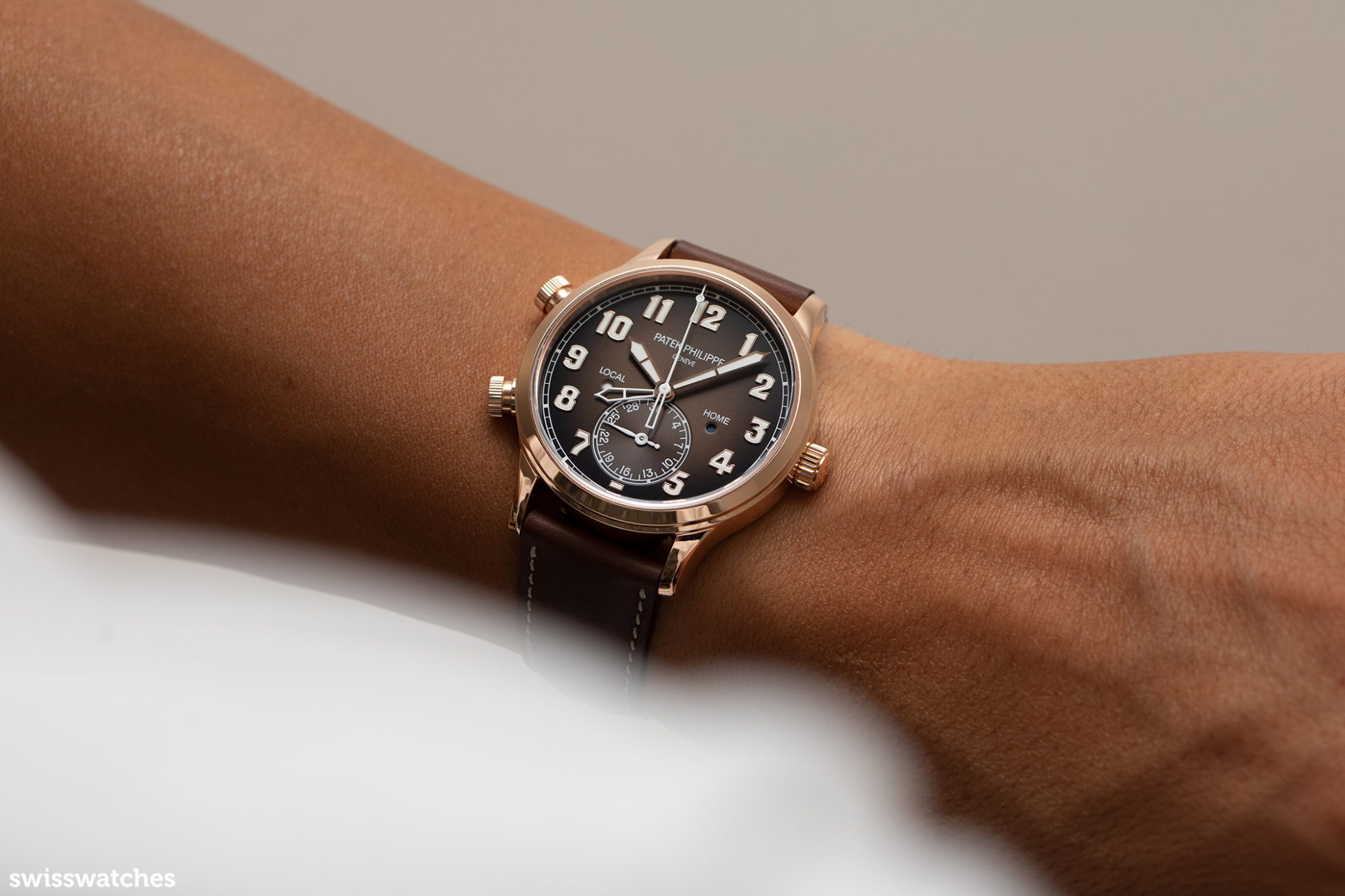
Calatrava Pilot Travel Time Ref. 7234R (2018)
In the same year, Patek also launched a mid-size version of the Calatrava Pilot Travel Time for the first time, with a case diameter of 37.5 mm (Reference 7234R). It is intended to also attract female consumers towards the pilot’s watch model, but will certainly also be in great demand by many male enthusiasts who still have a couple of vintage 33 or 36 mm models lying around at home. All other features are identical to its big brother in 42 mm.
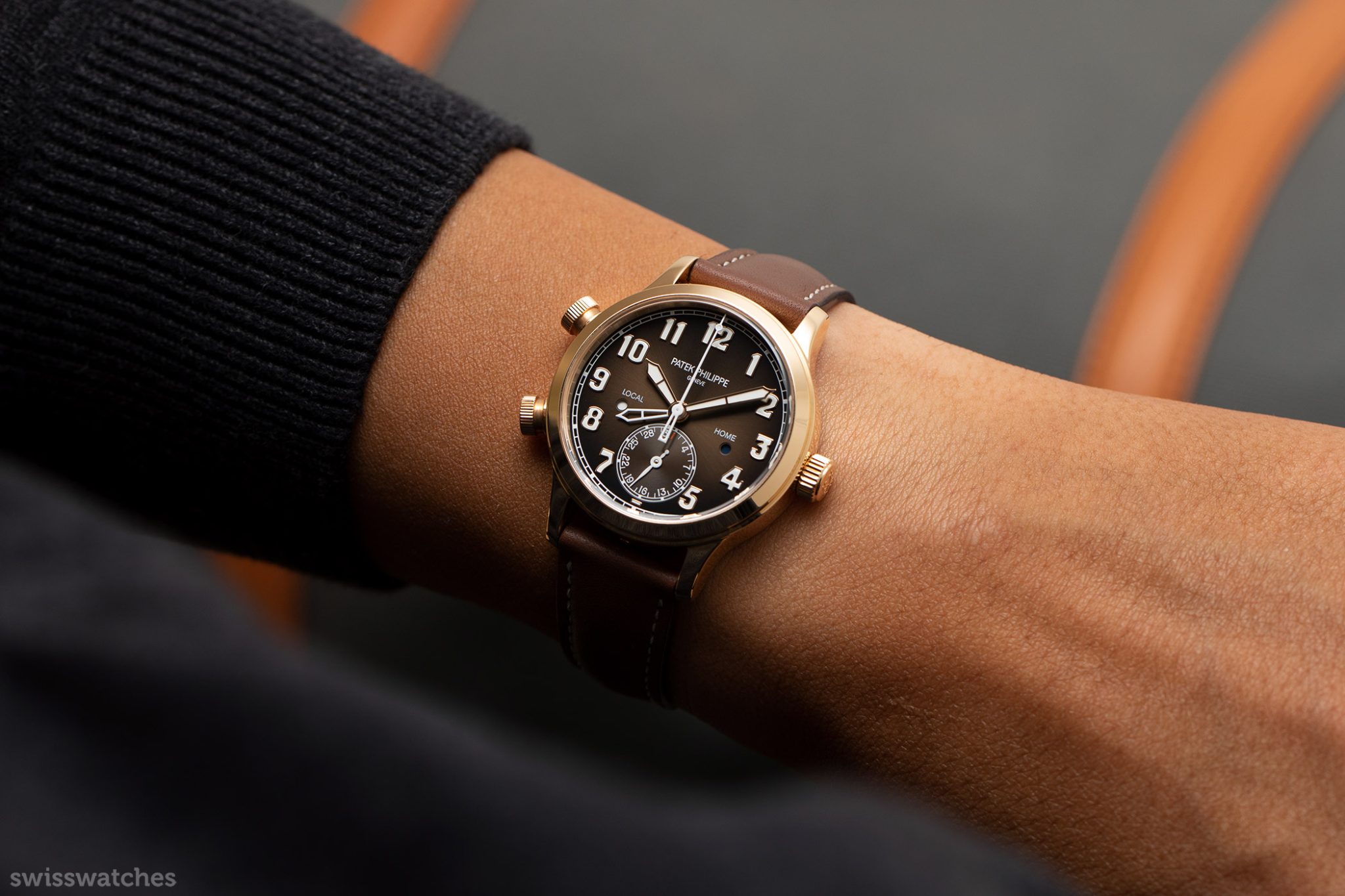
However, it is evident that the movement now fits much better into the overall aesthetic of the watch. The calibre 324 S C FUS seems to be somewhat lost in the 42 mm version and a lot of material has had to be placed around the open back of the case to cover the empty space.

It’s a bit like having a racing car in which you find the engine of a VW Polo under the bonnet. However, it was certainly not an easy task for the watchmaker’s designers; the movement could probably have been made a little wider (the peripheral oscillating weight for example), but with a height of 4.9 mm, the calibre is already quite flat – and should a pilot’s watch really be even flatter on the wrist? Probably not. Moreover, the manufacture would have had to design a completely new movement to implement this. Price: 41,830 euros.
NEW: Calatrava Pilot Travel Time Reference 7234G
Following the 2019 launch of a Grande Complication Alarm Travel Time Reference 5520P with alarm function into the collection, Patek is now introducing its original 2015 model with a white-gold case as a mid-size version (37.5 mm). Apart from the size, there are also a few subtle details that distinguish it from the 42 mm.
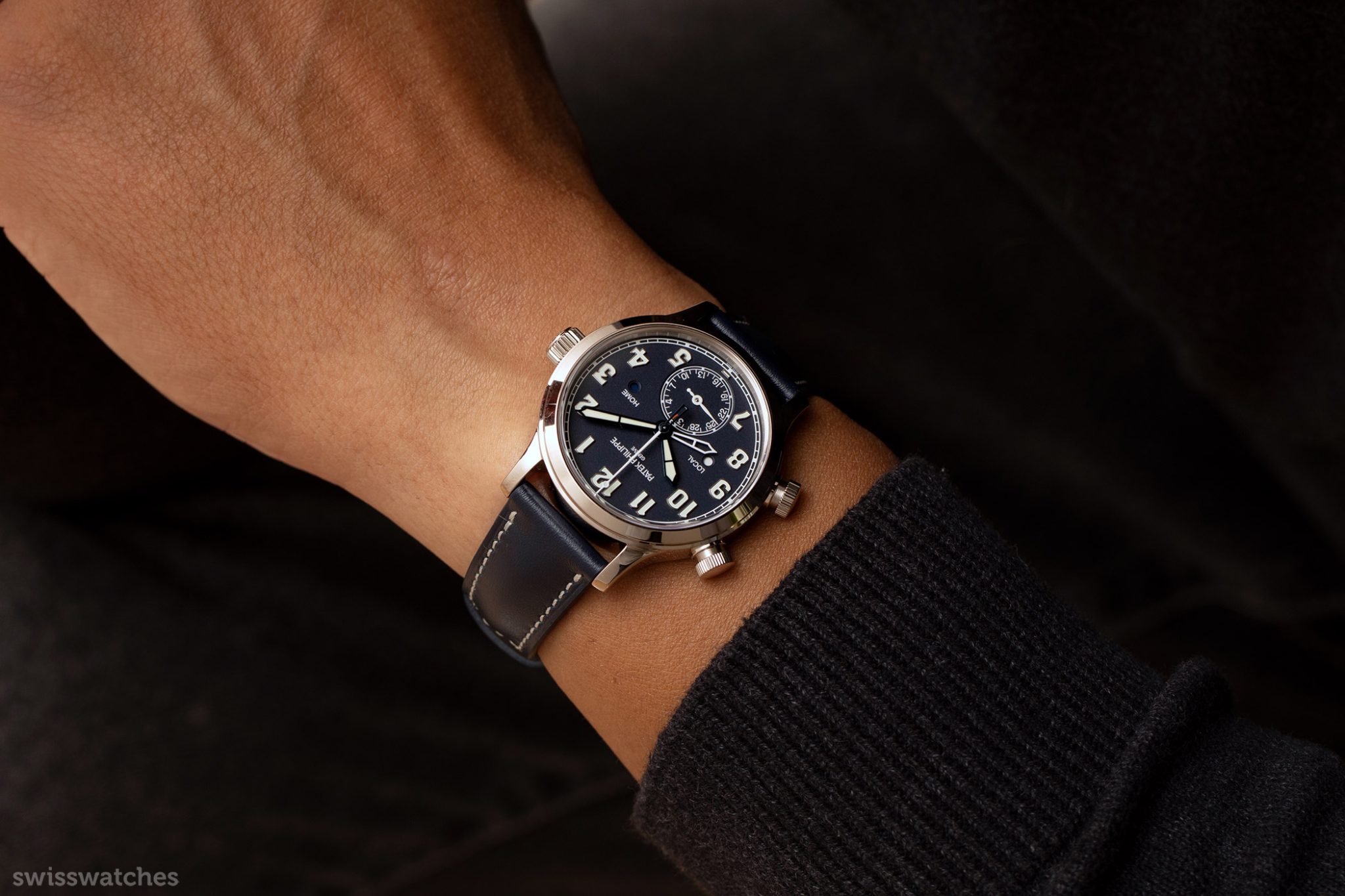
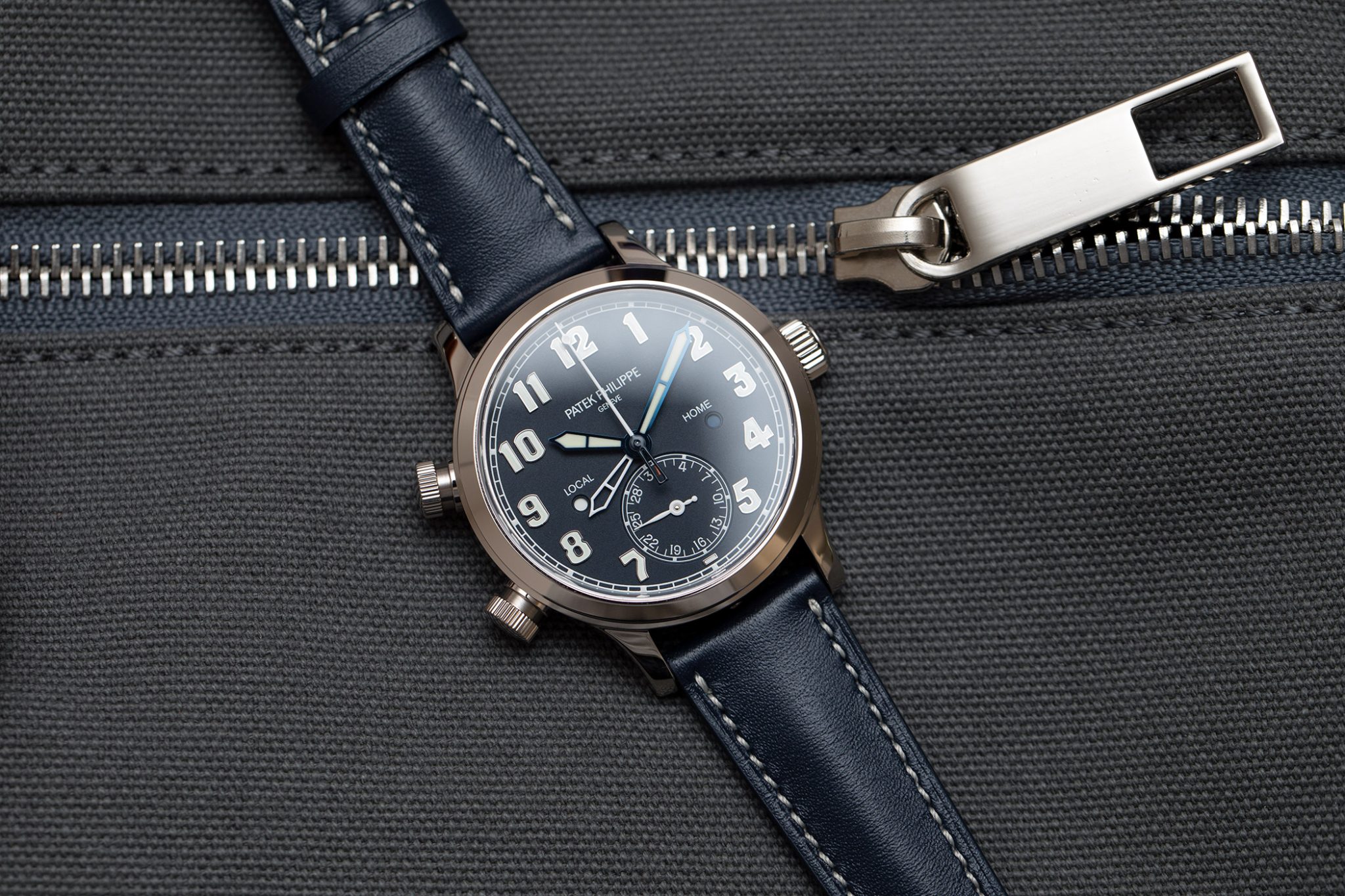
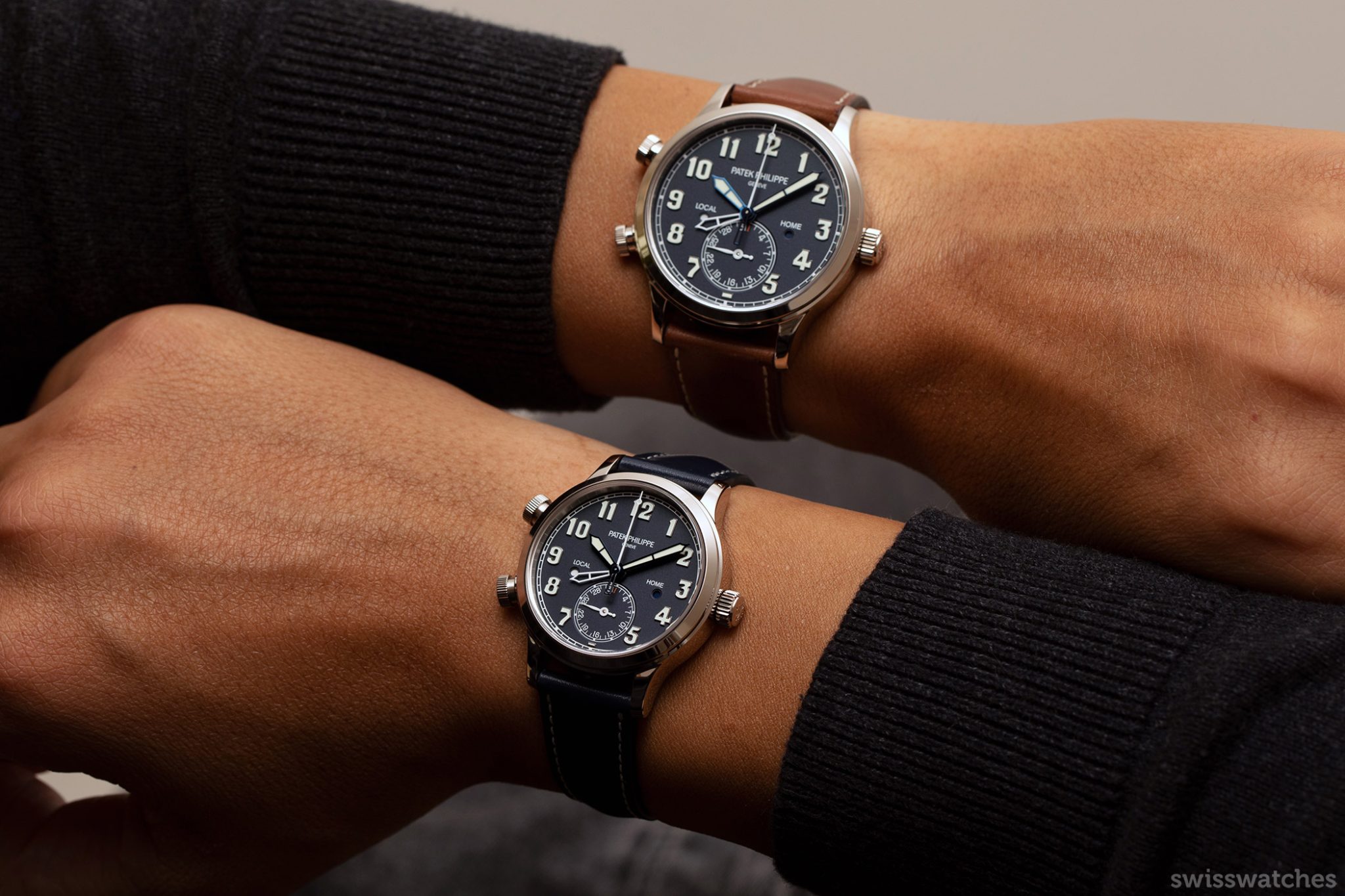
This includes blued white-gold (rather than steel) hands. Furthermore, the brown calfskin strap has been complemented with a navy-blue strap that matches the dial, although the strap is also offered in vintage brown leather.
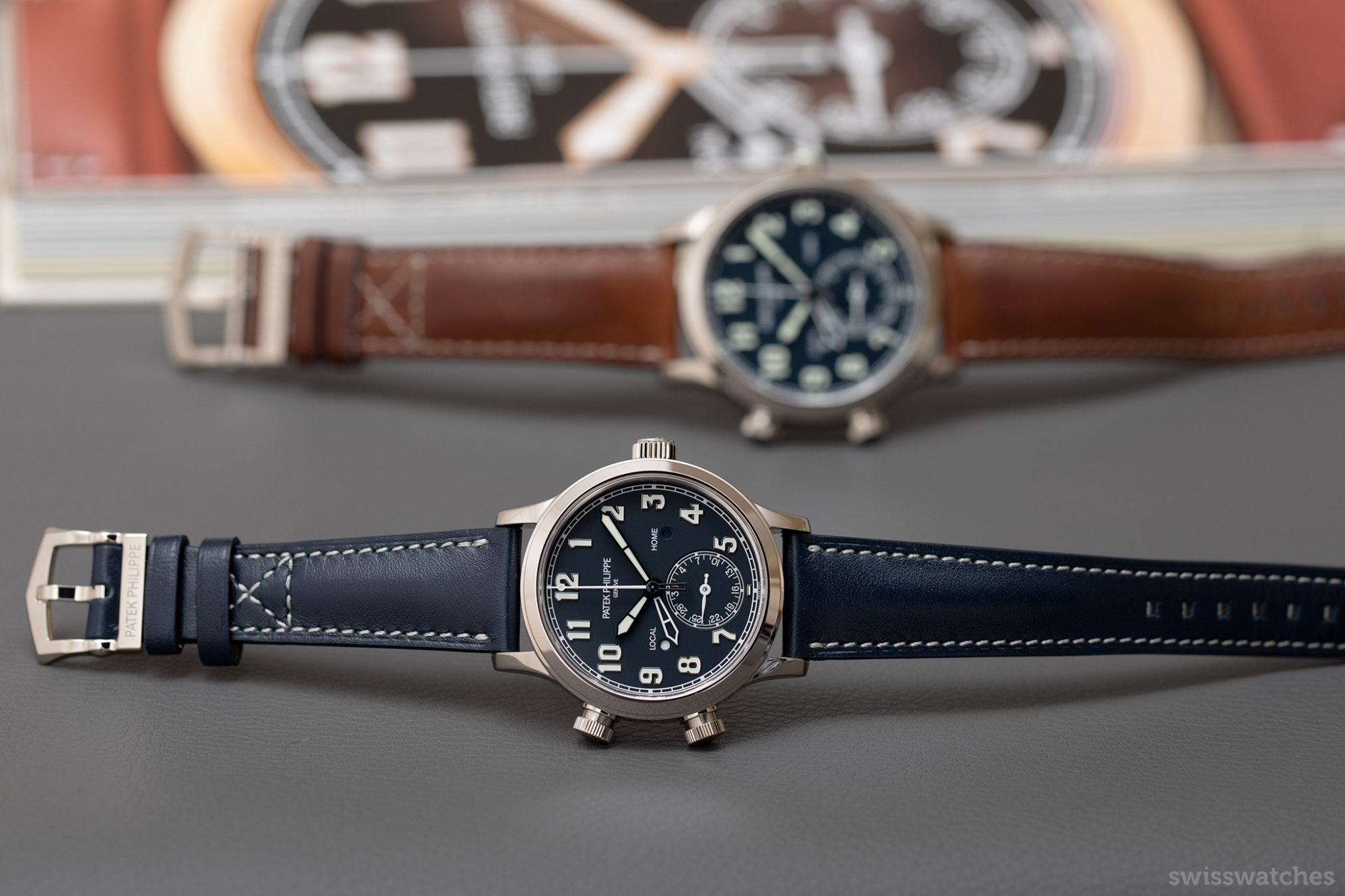
On that note, it’s time to take a closer look at the details of Patek’s pilot’s watches and also discover how the models differ. Price: 41,830 euros.
Highlights
Cases and Materials
The two versions launched in 2018, Reference 5524R (42 mm) and Reference 7234R (37.5 mm), both feature a rose-gold case. However, the use of gold differs from 4N for the smaller version to 5N for the larger version, with 5N having a slightly higher copper content (20.5%). This is also aesthetically noticeable, in that the smaller model tends to have a yellow-gold tone, while the 42 mm shines with a rich, pink-gold tone.
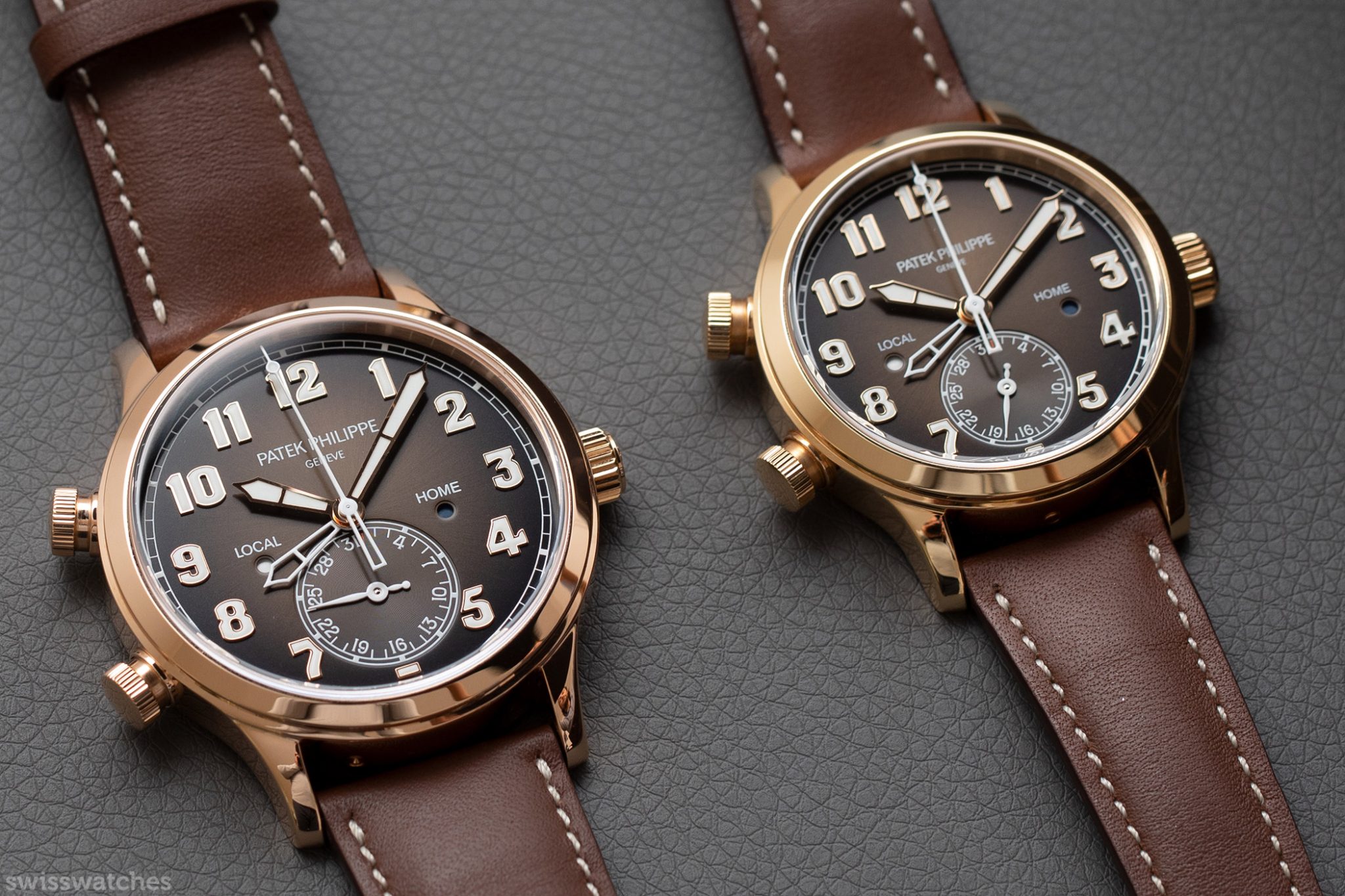
The Reference 5524G (42 mm), launched in 2015, as well as the new Reference 7234G (37.5 mm) both feature an 18-carat white-gold case. The cases of both the 42 and 37.5 mm models measure 10.78 mm.
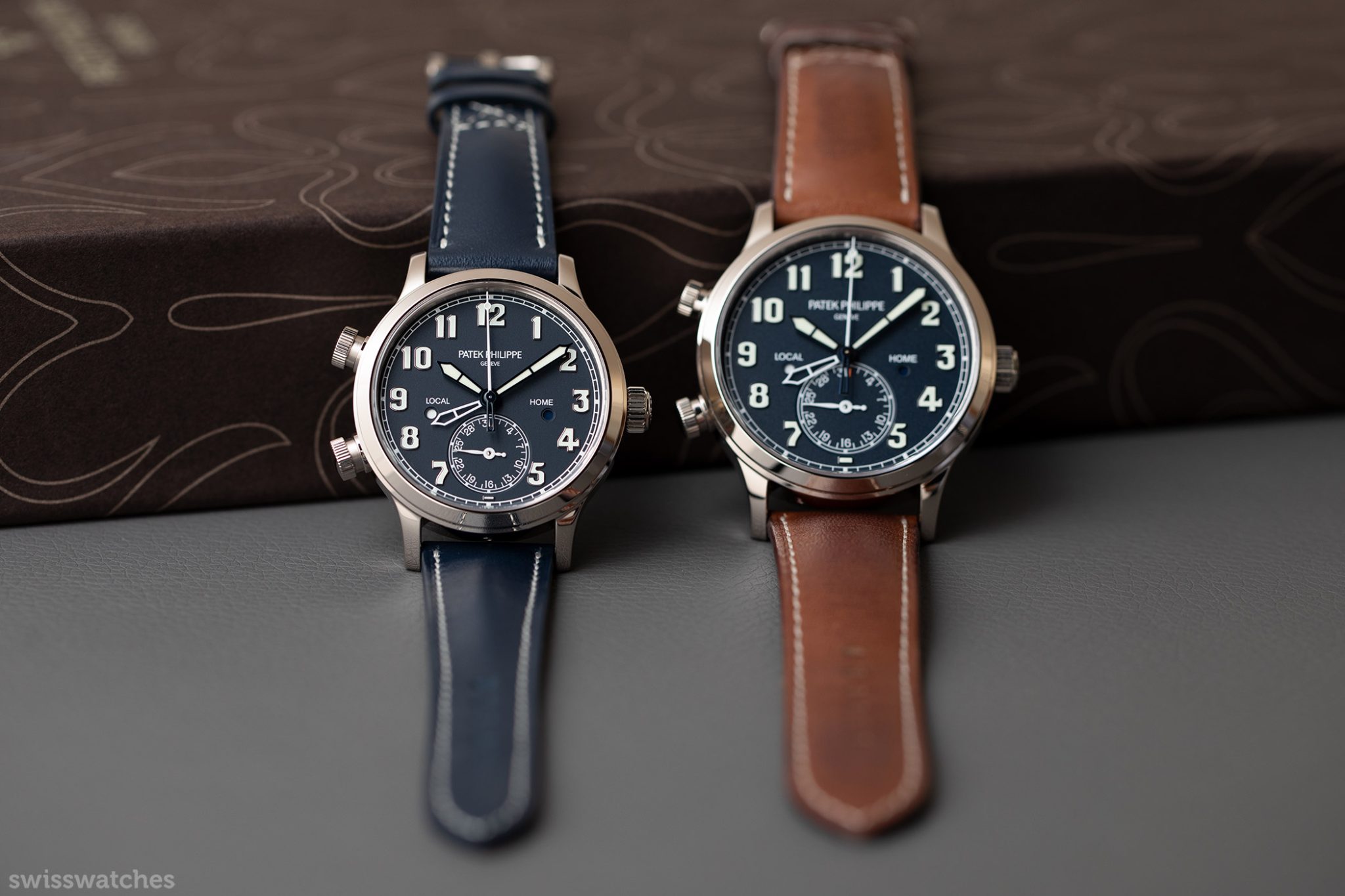
The Dials
The two rose-gold versions each have a brown sunburst dial, and when worn outdoors, a subtle black gradient is revealed. The appliques and baton hands are made of rose gold.

Meanwhile, the two white-gold models both showcase a blue lacquered dial with white-gold dial appliqués. The luminous hands of the larger white-gold model are blued steel, whereas the luminous hands of the new smaller version are blued white gold. Finally, the feuille date hands are painted white on all of the editions.
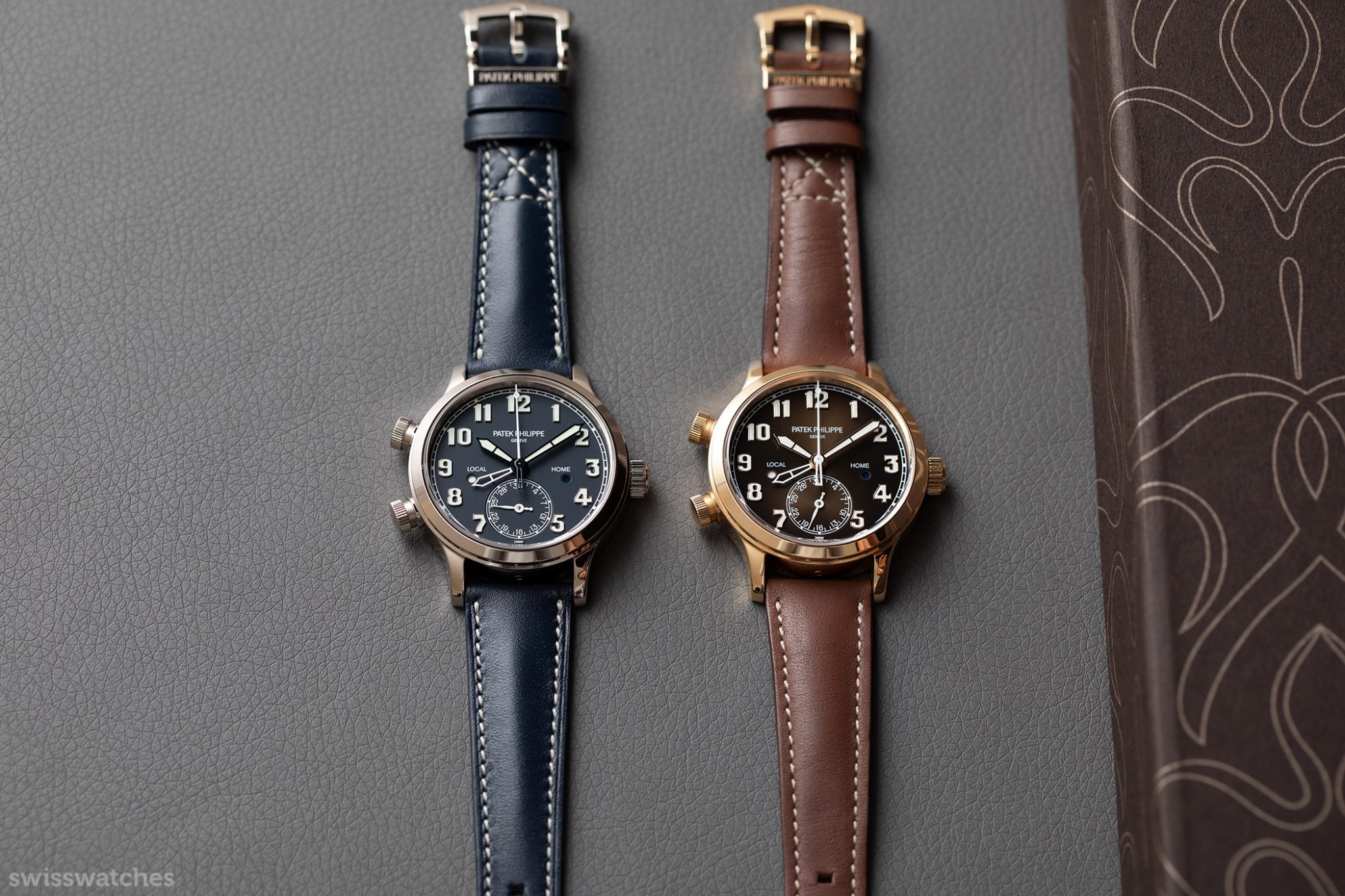
Display and Functions
The Calatrava Pilot Travel Time models show two time zones (local time and home time), a separate day/night display for local and home time, and incorporate a date hand. The two hour hands are superimposed on each other as long as only one time zone is used. If you travel to another time zone, the local time hour hand advances (bottom pusher) or retracts (top pusher) in one-hour increments. The skeletonised hour hand then displays the home time.
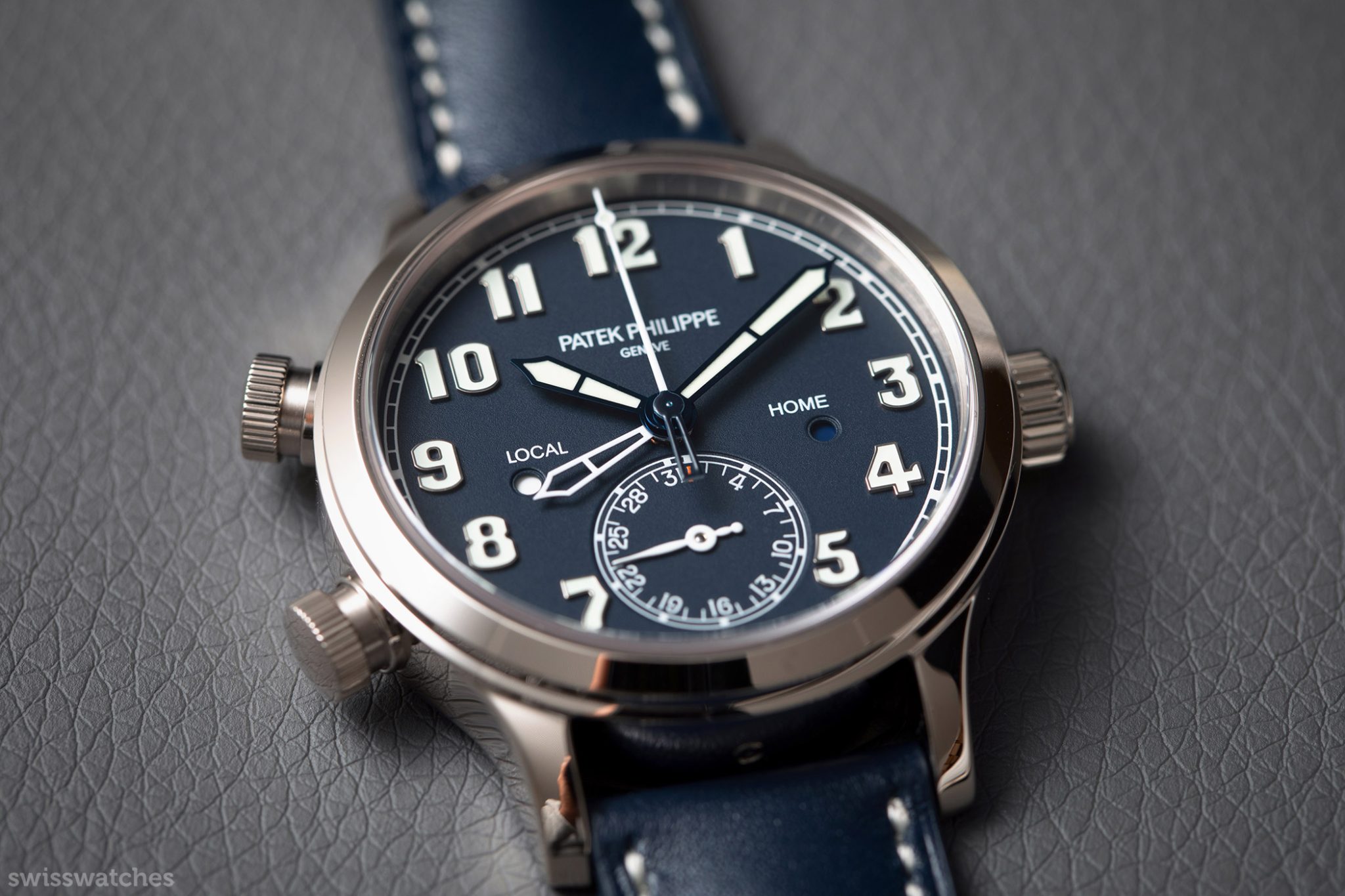
The two time zone pushers are located on the left side of the case and feature a patented safety device that prevents the local time from being inadvertently changed. The date at six o’clock is synchronised with the local time.
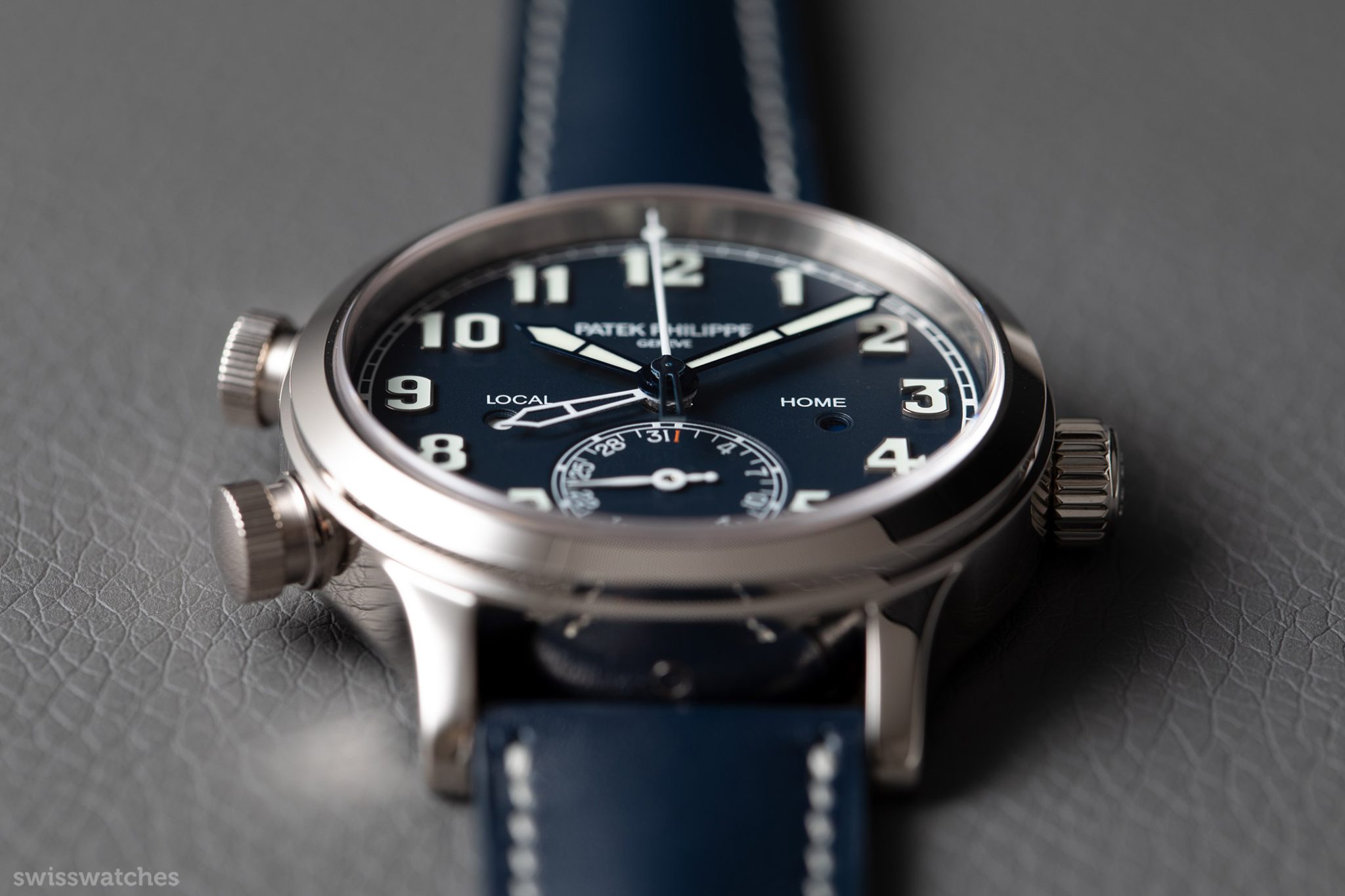
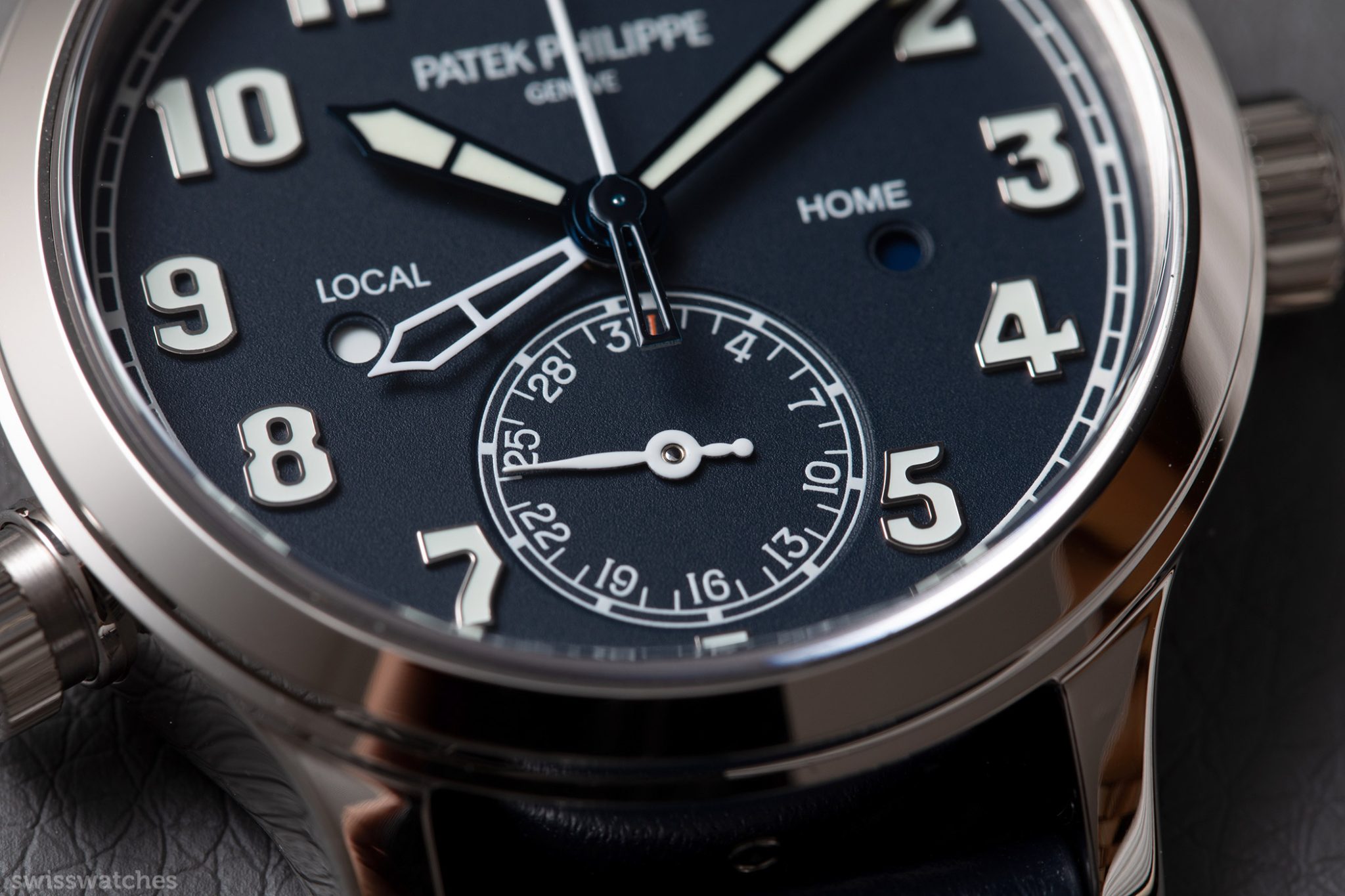
The Movement
The calibre 324 S C FUS with automatic winding consists of 294 individual parts, with an easy-to-use Travel Time system used to display the second time zone. The movement is based on Patek’s established calibre 324 SC (seconde centrale), which is also used in the Nautilus, Aquanaut and Calatrava. Thanks to its high oscillation frequency of 28,000 Hz, the movement offers a stable rate and consequently reliability and accuracy.
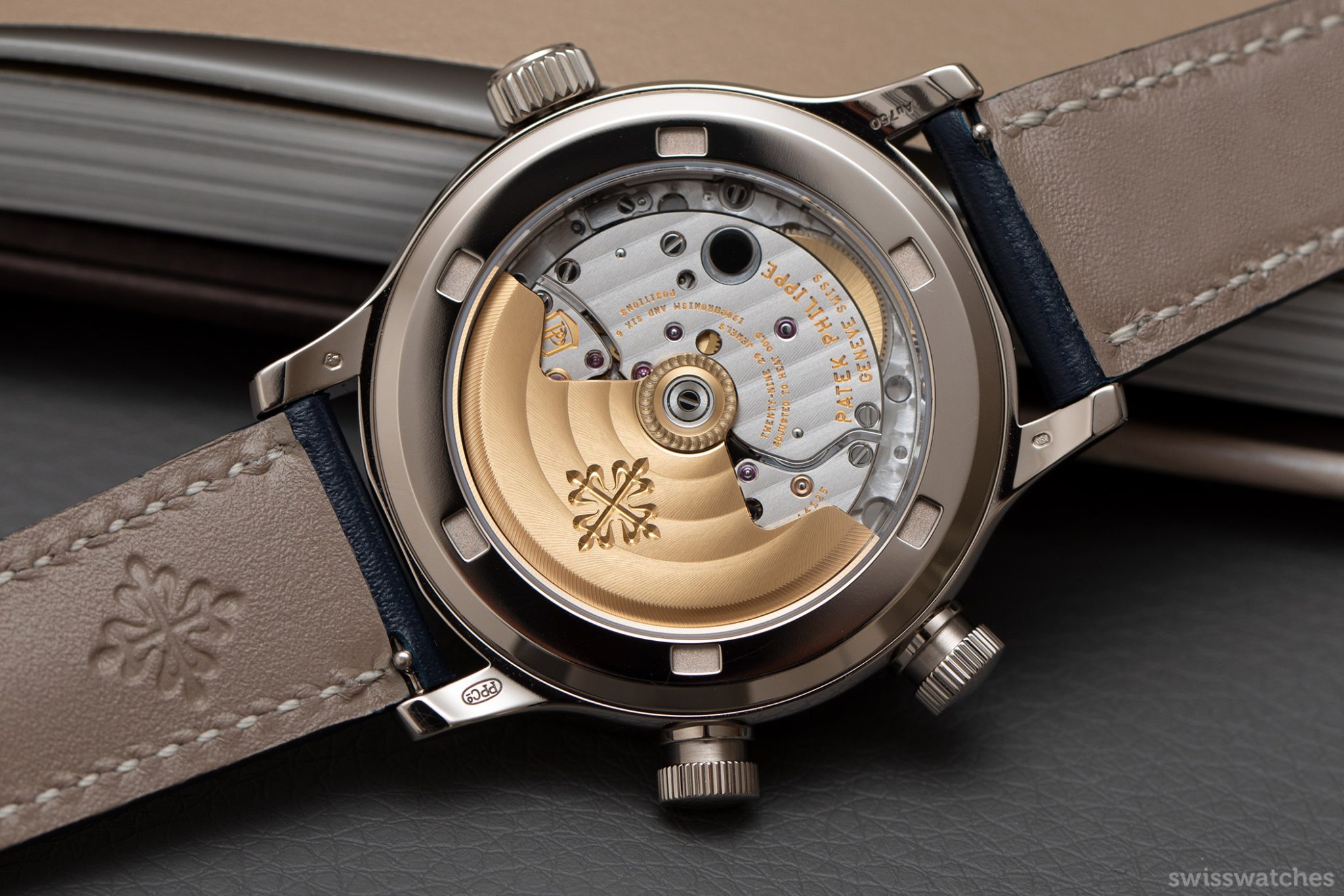
Including the module, the movement measures a 31 mm (diameter) by 4.9 mm (height). The balance is made with the patented Gyromax and Spiromax hairspring using the silicon derivative Silinvar – as mentioned, a light but hard, almost frictionless, anti-magnetic and corrosion-resistant material. The unilateral winding of the 21-carat central rotor provides a maximum power reserve of 45 hours.
The Straps
One special edition, Reference 7234A, launched in 2019 to mark Patek Philippe’s exhibition in Singapore, gave a small taste in advance of the new (structured) calfskin strap in blue. It looked damn good, but unfortunately the model was limited to 400 pieces. For the new non-limited model, Patek also chose a blue (but smooth) calfskin strap. If that seems too unusual, one can always go for the vintage brown strap that comes with the watch.
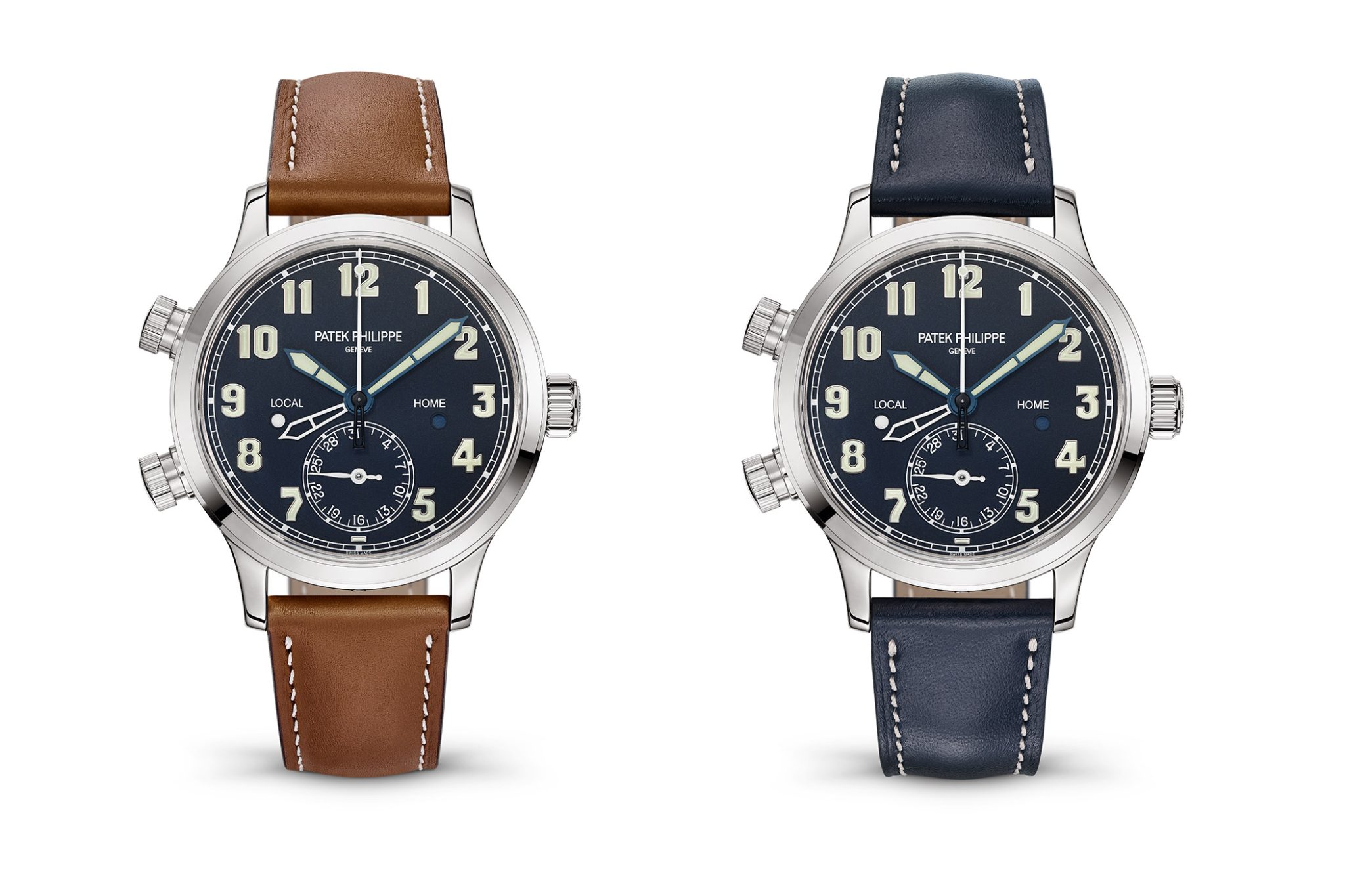
Closing Remarks
What does a gold case have to do with a pilot’s watch? Well, back in the 1930s, nothing at all. The modern interpretation has been revolutionised by the changed use of pilot’s watches. Anyone who wants to live out the spirit of yesteryear to the full, Patek’s Travel Time line is a poor fit. But anyone interested in the history of the manufacture and looking for a little variety within the product portfolio could have fun with the models.
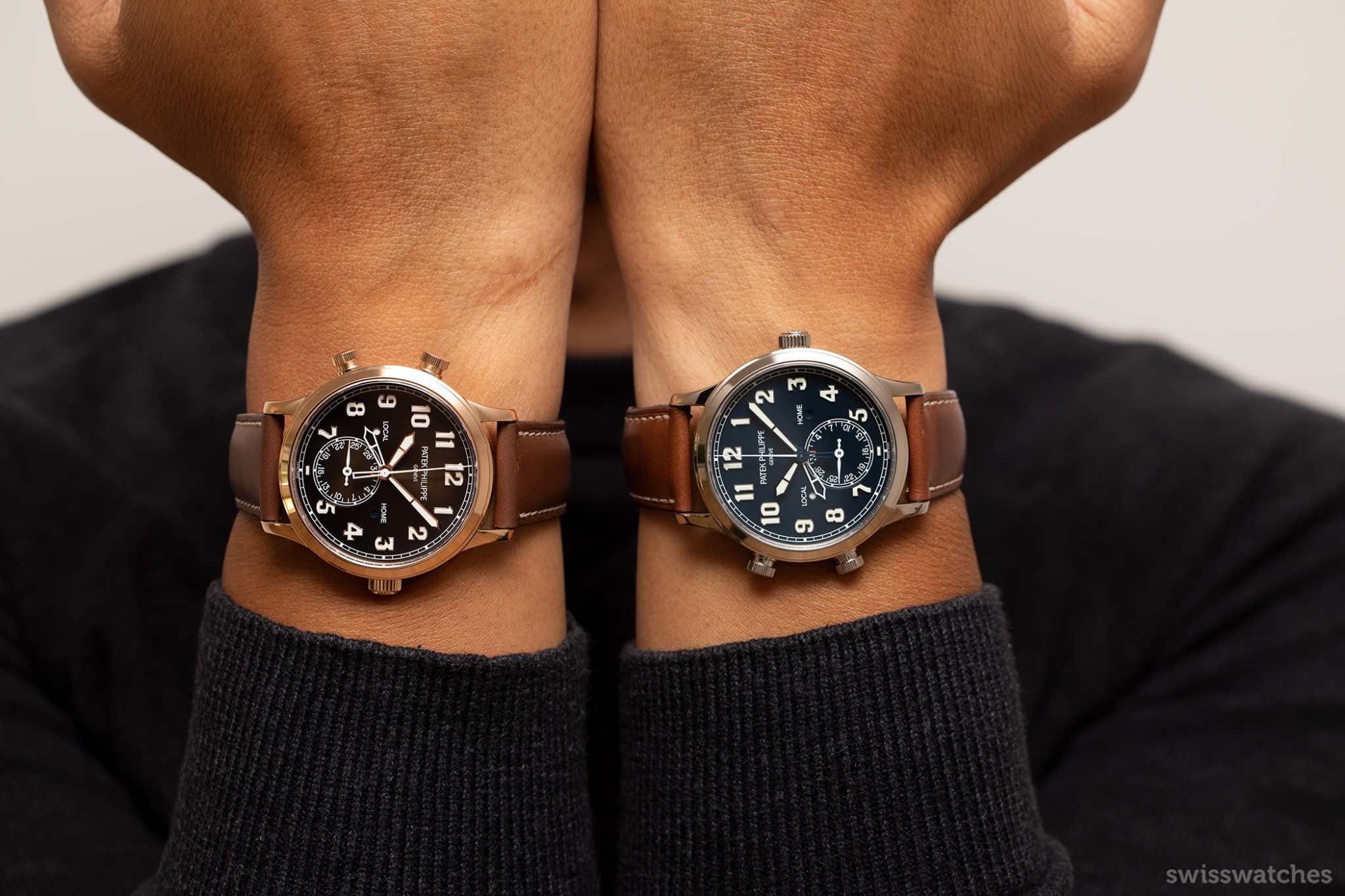
The movement has proven itself and is ultra-modern, the displays and functions are useful, and both case sizes could not be better, even if pilot watch fetishists might complain that 37.5 mm is by no means a real size for a pilot’s watch. It is also very much the Patek interpretation of a pilot’s watch, and not that of IWC, Oris or Zenith.
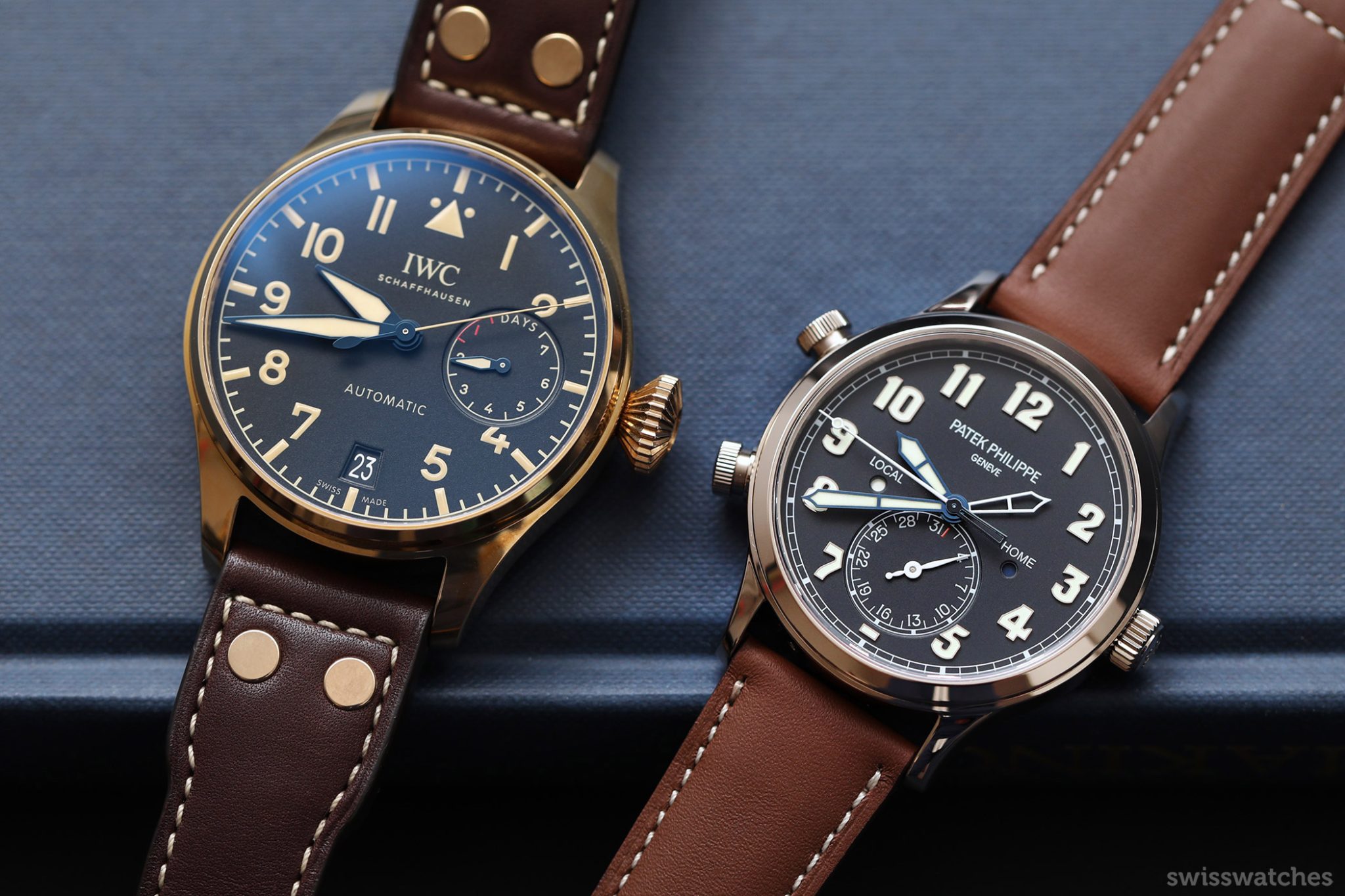
One amendment could be that the pushers’ design should have been adapted to fit with the medium versions’ case size. As it stands, the pushers make them look a little too bulky and disproportionate. On the other hand, the movement, with its 31 mm diameter, fits much better with the smaller case. Furthermore, the date hand, alongside the white-lacquered feuille hands appears almost a little too classic when combined with the large luminous numerals and baton hands. It would be interesting to see how a large date would look like in its own position.
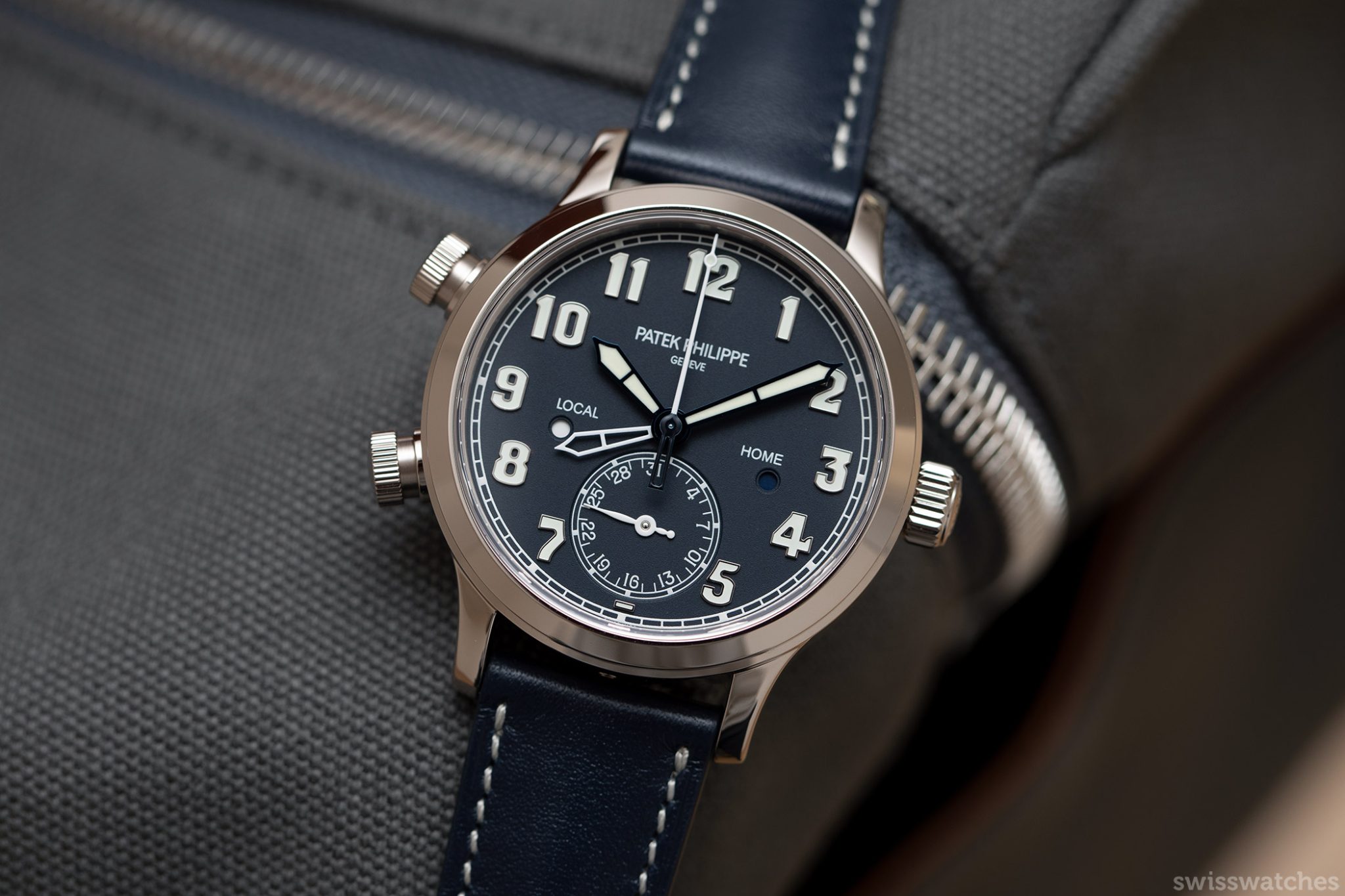
Finally, a few more words about the new bracelet. The strap of the limited Singapore model was so exotic and cool that it was somehow clear that it would only be issued in the form of a special edition in a very limited edition. This makes it all the more pleasing to see that it has now been taken up again and integrated into the line as a fixed entity. What could come next? A version in yellow gold, or even in stainless steel? A first welcome upgrade would undoubtedly be to rework the movement to offer customers a longer power reserve.
